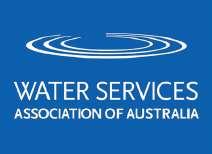






SHARING OF EXPERTISE
Julie Bishop on the water expertise Australia presents to the rest of the world.









Julie Bishop on the water expertise Australia presents to the rest of the world.

This mentor-mentee duo shows that some mentoring relationships go beyond boundaries.
With water in short supply as a result of a number of factors, what needs to be done to preserve the remaining water on earth?

Going beyond the scandals and political duels surrounding the Murray-Darling Basin.
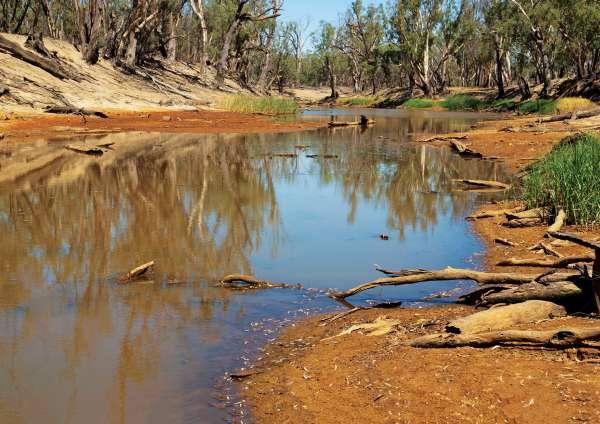
Technology for the water sector goes beyond a nice-to-have to a must-have in the aid of productivity.

The water industry is one that’s lagging behind in encouraging women to step up, but change needs to first come from within.
Industry and academics are collaborating to improve the management of critical water mains networks.
P34 AWA’s Jonathan McKeown says the industry, as a whole, needs to bring the Murray-Darling Basin out of jeopardy.

States and territories need to come together and provide certain powers to the national government to ensure that the National Water Plan is consistent and fairly enforced across all jurisdictions.



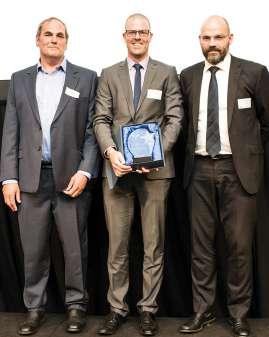

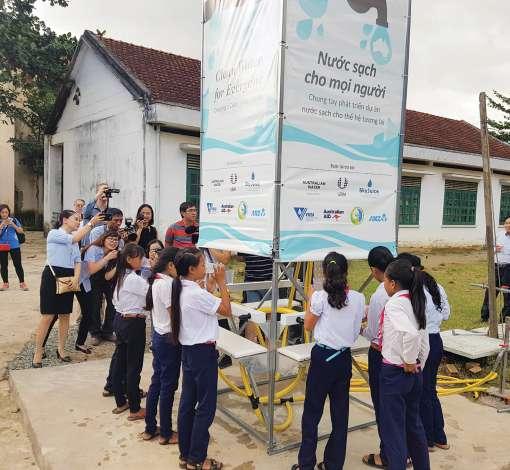
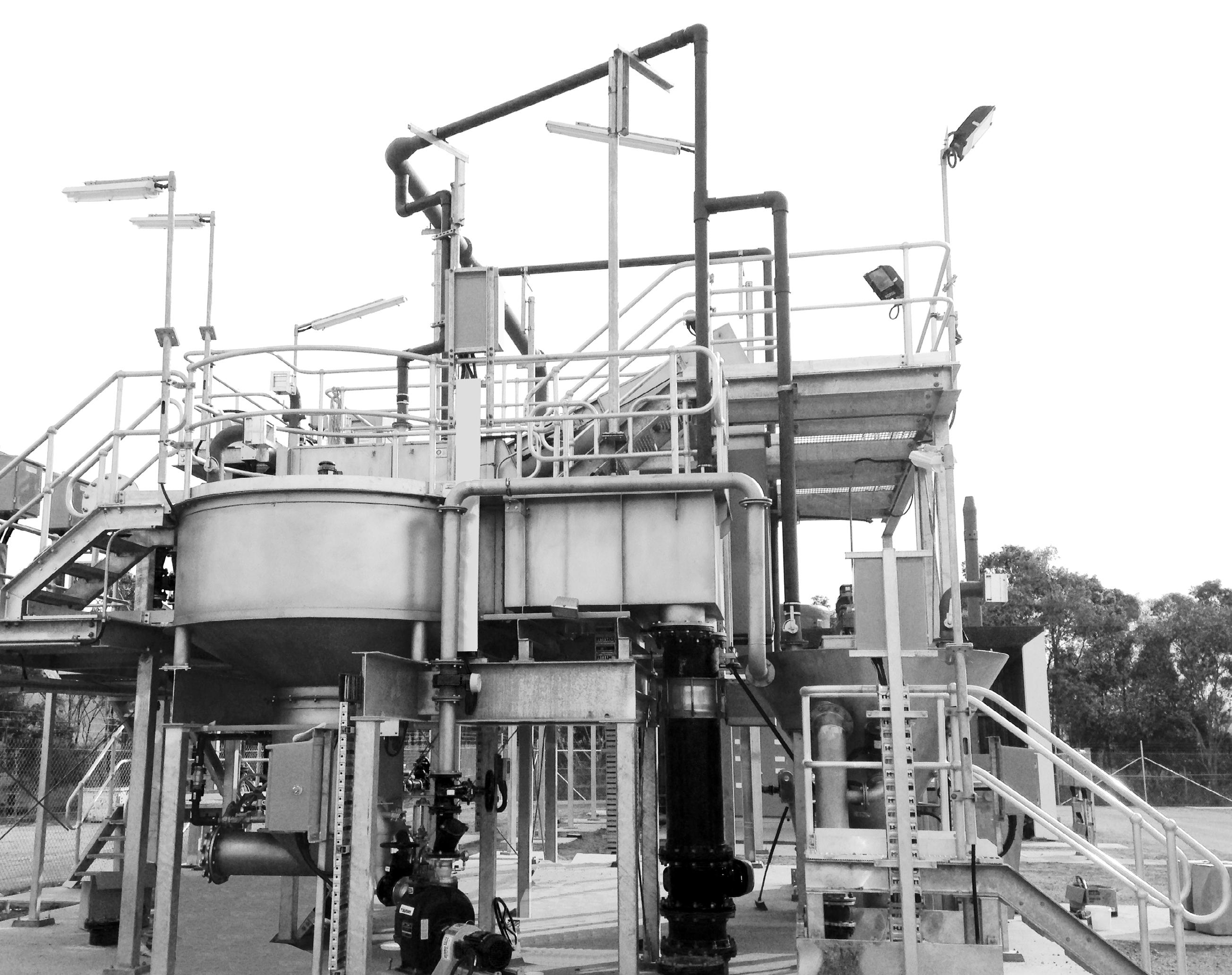







Jonathan McKeown Email: jmckeown@awa.asn.au
National Manager – Events and Marketing: Kirsty Blades Email: kblades@awa.asn.au
TECHNICAL ADVISORY COMMITTEE:
Ted Gardner (Chair); Frank R Bishop (rtd), GHD; Chris Davis (rtd), Australian Water Association; Dr Andrew Bath, Water Corporation; Michael Chapman, GHD; Dr Dharma Dharmabalan, TasWater; Robert Ford (rtd), Central Highlands Water; Dr Lionel Ho, Allwater; Karen Rouse, Water Research Australia (WaterRA); Dr Tim Muster, CSIRO Land and Water; Dr Robbert van Oorschot, GHD; David Power, BECA Consultants; Dr Ashok Sharma, Victoria University.
Technical Co-Ordinator: Natalija Gagic Email: journal@awa.asn.au
Current is the official quarterly magazine for members of the Australian Water Association. 655 Pacific Highway, St Leonards, Sydney, NSW 2065 Phone: (02) 9436 0055 Email: info@awa.asn.au
369a Darling St, Balmain, Sydney, NSW 2041
Managing Editor: James Chalmers
Email: james@mahlab.co Editor: Hafizah Osman Email: hafizah@mahlab.co
Graphic Design: Matt Caulfield, Gary Humphrys and Don Tay Senior Account Manager: Ella McGuire Email: ella@mahlab.co
Advertising Manager: Val Glendinning Email: val@mahlab.co
EDITORIAL SUBMISSIONS: Acceptance of editorial submissions is at the discretion of the editors and editorial board.
TECHNICAL PAPERS: Submissions should be 3000–4000 words long and accompanied by relevant graphics, tables and images. To submit a paper or for more detailed submission guidelines, please email journal@awa.asn.au
NEWS AND FEATURES: News tips, submissions and press releases should be sent to hafizah@mahlab.co
COPYRIGHT: Current is subject to copyright and may not be reproduced in any format without the written permission of AWA. Email hafizah@mahlab.co
DISCLAIMER: The Association assumes no responsibility for opinions or statements of fact expressed by contributors or advertisers.
Mention of particular brands, products or processes does not constitute an endorsement.
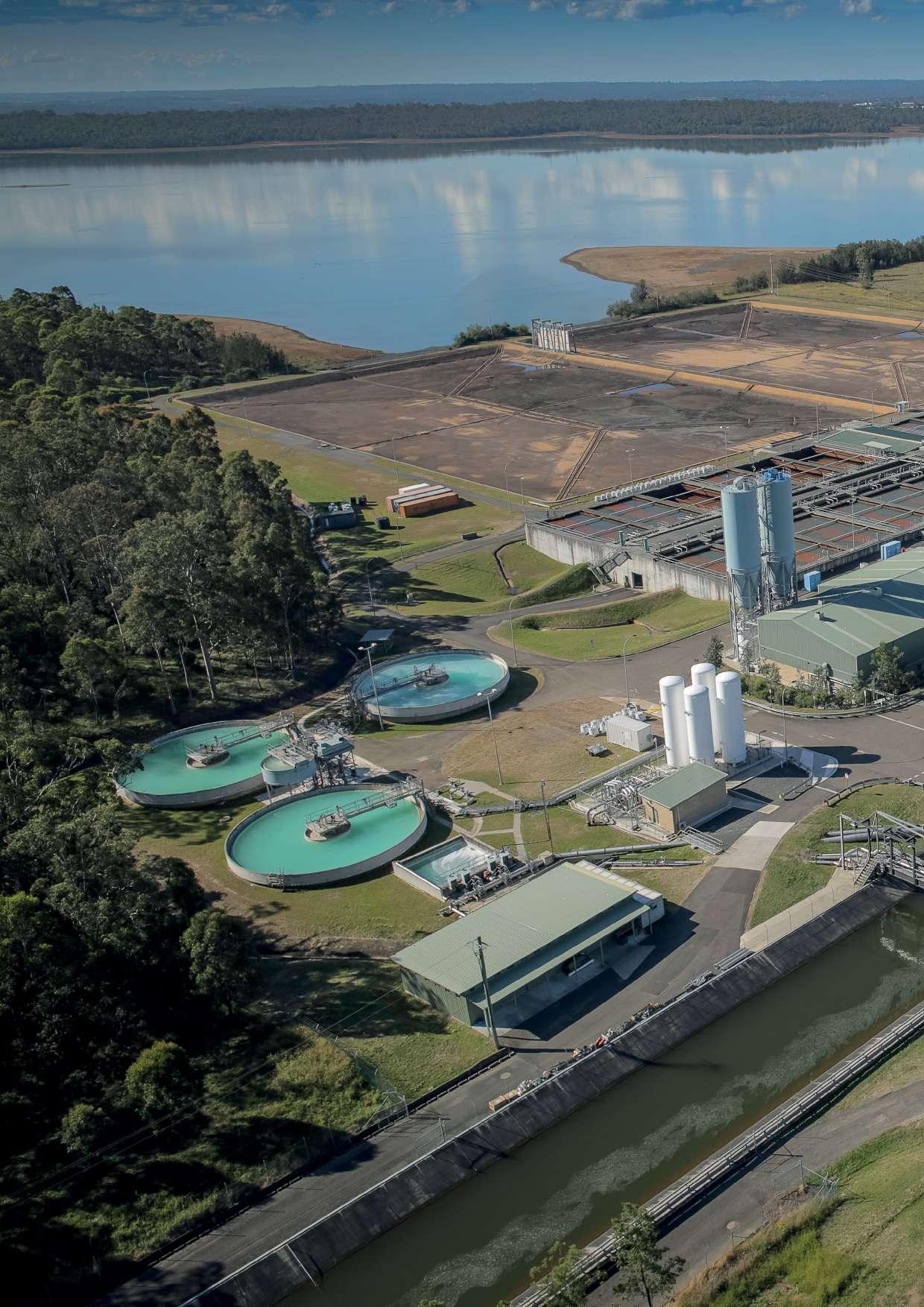
Welcome to the first edition of Current for 2018. May the year ahead provide all members and the Association itself with positive challenges and opportunities to progress Australia’s sustainable water management.
Access to water and the sustainable management of water continues to shape our health, economic prosperity, and the wellbeing of the environment. These competing challenges of health, economics, and the environment are directly influencing the development of regional and global politics. This edition of Current includes an article on the political and economic tensions caused by water and an interview with Foreign Minister Julie Bishop on the role Australia plays in advocating improved water management. The Association’s own international program plays a growing part in positioning Australia’s water expertise across the Asia-Pacific region.
On the domestic front, the Association will continue to advocate for more reform of the water sector to provide national competitive neutrality; a competitive neutrality that allows all water service providers to compete openly and equally. Our rural and regional water providers need special consideration in maintaining and improving water quality in areas that do not have a viable economic base to underwrite water infrastructure investment. The regulatory compliance regimes under the Murray Darling Plan need to be properly enforced to provide rural water users with assurances that it is indeed being managed sustainably. Our water trading markets and procedures will carry increased influence and deserve greater policy attention. Across our fast expanding urban areas, the Association will continue to seek more integration of planning procedures that recognises the vital role of water management in providing increased efficiencies and liveability. The role of stormwater, its management and utilisation, is also worthy of special priority. The need for increased investment in water R&D is becoming evident as Australia falls behind our major trading partners and similar developed economies in terms of a GDP percentage contribution to water research.
All these matters were included in the Association’s submission to the Productivity Commission’s Water Reform Inquiry last year and the Association looks forward to working with government to implement the Commission’s recommendations.
All water professionals and businesses delivering services in the water sector require up-to-date information on industry trends and developments, networking opportunities to grow their business, and industry recognition for their efforts and successes. I encourage all members to connect with the Association in 2018 through our practical member programs, designed to provide exactly these outcomes. By connecting with the water industry through our active Branch events and activities, our Specialists Networks and through the Association’s programs, our individual members are provided with unique professional development to enhance their careers and expertise. Our water industry programs include:
• International Program – to position Australia’s water expertise across the fast-growing Asia-Pacific Region;
• Water Utility Twinning Program – to link Australian water utilities with water utilities across the Asia-Pacfic Region;
• Australian Water Awards Program – to recognise our industry achievers in each State/Territory and nationally;
• Young Water Professionals and Mentoring – to encourage our young water professionals to contribute their own vitality to the industry;
• Channeling Change – to recognise and support increased diversity across the water sector;
• Australia New Zealand Biosolids Partnership – to promote the beneficial reuse of bio-solids;
Take a moment to speak with us on how you can become involved with any of the Association’s programs this year.
Jonathan McKeown Australian Water Association Chief Executive


Welcome to our exciting first edition of Current for 2018. I would like to start by wishing you all a wonderful and safe year ahead.

Your board and management will this year continue to focus on delivering an Association that offers quality technical and industry information be that at events or through our digital platforms, great networking opportunities, and ways that you can be recognised for your contributions to the sector as either an individual or an organisation.
Linked to the provision of information, late last year saw us conclude a review and consultation process relating to our specialist networks. This review resulted in some consolidation and renaming to better reflect the relevant specialisation and you will see more information from our specialist networks throughout the year.
But for now, our focus is turning to Ozwater; Australia’s premier event on the water calendar. This year’s conference will take place in tropical Brisbane between 8 and 10 May. Building on the success of the 2017 conference, this year’s organising committee are intent on making this the best Ozwater ever. The conference has many parallel streams, supported by the very successful trade exhibition whereby the industry showcases its best and latest offerings. It’s where our sector comes together to share ideas on the future of water in Australia – an event one should not miss and that I look forward to seeing you at.
Prior to Ozwater’18, our Strategic Advisory Council will meet in March. This is a very important body within our Association consisting of Branch Committee representatives who provide strategic advice to the board. I therefore invite members to raise strategic matters with their respective Branch Presidents before mid-March.
During November 2017, I attended the Vietwater exhibition as part of the Association delegation which, for me, was a very proud, humbling and educational experience. The Association’s international activities are self-funded by participants. I was extremely impressed with the scale of the trade exhibition, which was attended by 14,000 visitors.
The Association led a delegation of 94 Australian water professionals, including 20 exhibitors as well as representatives from Australian water utilities involved in the Australia-Vietnam twinning program, government agencies and academic institutions for a week-long program designed to connect the Australian and Vietnam water sectors. The Australian pavilion was awarded
‘Best Exhibition at Show’ for the third time running.
Our energetic international team did magnificent work introducing the Australian delegates to local experts on opportunities and challenges of doing business in Vietnam and providing context of the Vietnam water sector through site tours of water and wastewater treatment plants.
Leading in to Vietwater, a very successful ‘Women in Water’ seminar took place showcasing many international and local speakers; both Louise Dudley and Fabiana Tessele (AWA Directors) shared their fascinating career journeys and the local speakers included Mrs Mai Lien Huong, Director General, Ministry of Construction and also the Vice President of the Vietnam Women’s Union, representing 19 million members across Vietnam. It was an eye-opener to witness the better gender distribution at treatment plants compared to similar plants in Australia (and many other countries I have worked in). There is a feature in this edition on our ‘Channeling Change Program’, which covers gender diversity, an area in which we must continue our pursuit.
I hope you enjoy this edition of Current, which is packed with exciting industry news including a must read interview with Julie Bishop, our Foreign Minister, Water Wars, the Murray Darling Basin and Water Leak Technologies.
Francois Gouws Australian Water Association President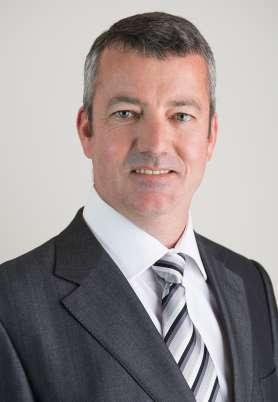
YOUR BOARD AND MANAGEMENT WILL THIS YEAR CONTINUE TO FOCUS ON DELIVERING AN ASSOCIATION THAT OFFERS QUALITY TECHNICAL AND INDUSTRY INFORMATION.
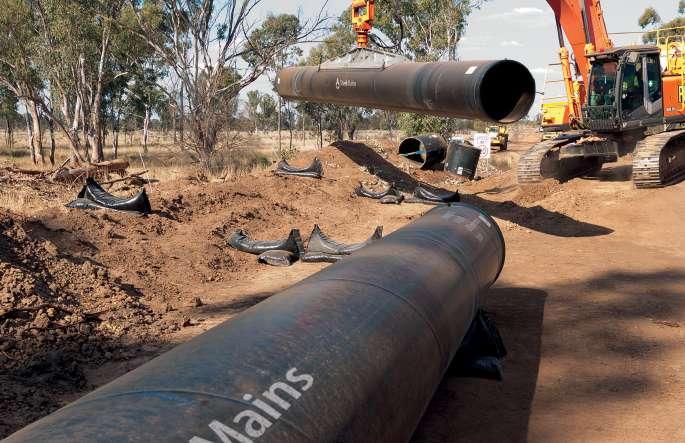


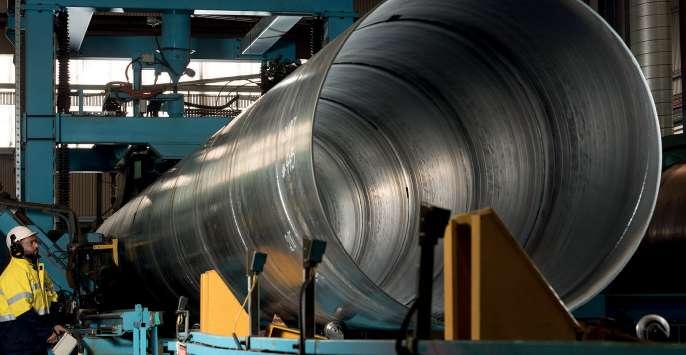


Macinley was the 2017 Australian Stockholm Junior Water Prize winner and thanks to Xylem, was sent to Stockholm to compete internationally. Here, she showcased her SOLAR SYSTEM project, to provide both clean potable drinking water for a community in need as well as sterile water for medical use. It’s great to see an outstanding young individual like Butson gaining further recognition.
Major capital investments across Vietnam have delivered greater water security and safety in recent years. However, water infrastructure and services have often not kept pace with economic development. The Australian Government has played a significant role in the last six years, enabling greater access to drinking water services for many rural and remote communities in Vietnam.
As part of this effort, AWA, together with the Australian Government, has facilitated the transfer of technology and knowledge sharing to bring safe drinking water to remote Vietnam. This included a delegation of Australian water professionals who installed drinking water systems in two rural schools in the Province of Khanh Hoa in November.
As a result of this initiative, 1700 school children no longer need to purchase and carry bottled water to school.
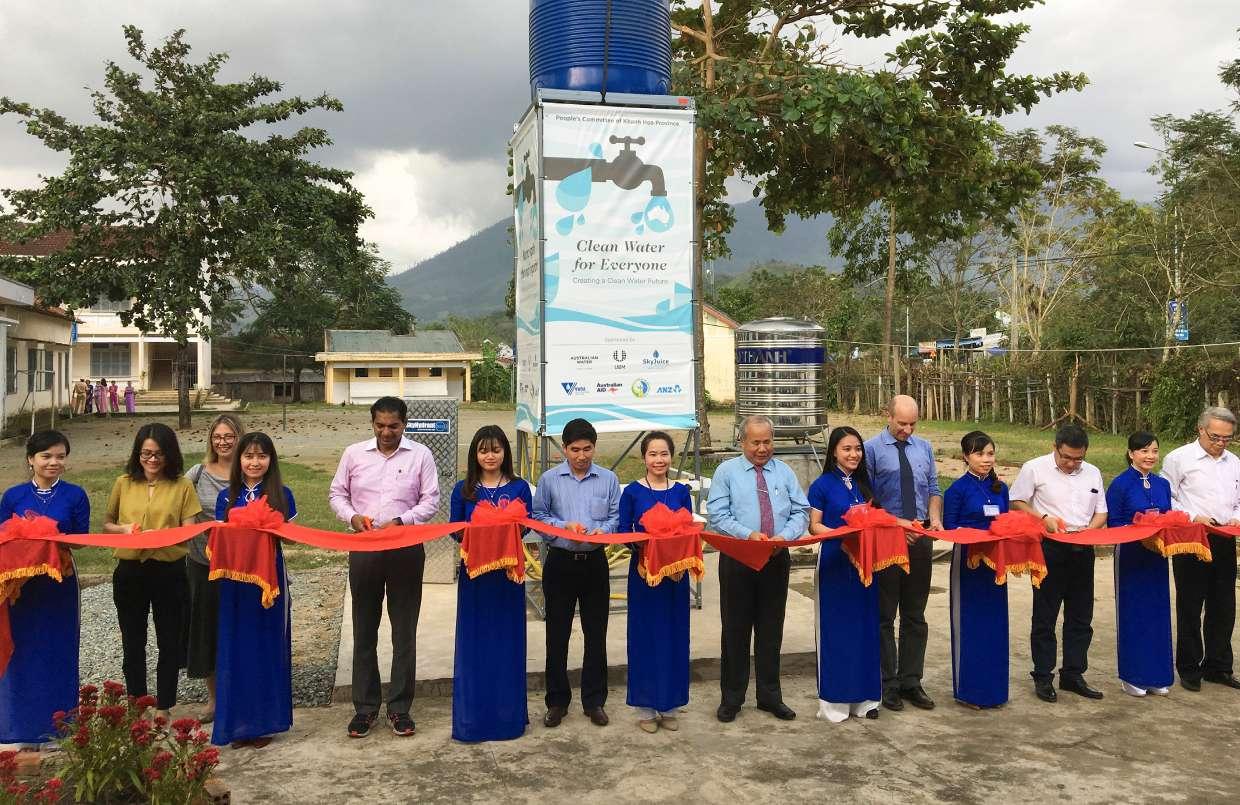
n December, the Association conducted a series of interviews with a number of members to find out their stories of diversity. Talks with Matthew Renshaw from AECOM; Christina Tonkin from ANZ; Kate Dryden from Veolia; Andrew Spinks from Jacobs; Tayo Adepoyibi from Seqwater; as well as AWA Chief Executive, Jonathan McKeown resulted in six new videos, which are now available online. Special thanks to AWP and ANZ for their support of the Channeling Change program. Watch them now at awa.asn.au/channelingchange

It has been one of the biggest years yet for the Association’s Australian Water Awards, with: l 166 award nominations received across the country, a 43% increase on 2016 l A 114% infrastructure project innovation nominations increase, a 112% research innovation nominations increase and a 110% Water Professional of the Year nominations increase. NSW winners will be announced at the Heads of Water Gala Dinner in March, with all state winners vying for national honours at Ozwater’18.
To view the full list of national finalists, visit: http://bit.ly/AWA_awards18

Following a review of the specialist networks in December, the Association has announced its 14 specialist networks for 2018/19. A member of the Association can join any of these networks and be informed by other members or be recognised for expertise in a particular area. Like to get more involved? Why not consider nominating for one of the network committees and help shape the conversation. Nominations are now open.



As an existing AWA member, you can join a Specialist Network that best suits your interests and career aspirations.
Right now

most-read
Katherine bans local produce consumption following water
Water security concerns arise in Queensland regions






Could radiation clean microplastics from wastewater and waterways?


To stay up to date and impress your colleagues around the water cooler with your water knowledge, head to bit.ly/AWA_latest_news
Thumb through the digital editions of Current, past and present.

You can find them at bit.ly/Currentmag

Find out more at TUNE IN!
The Association has recently launched a podcast and video series focussed on the latest developments in the water industry. Watch and listen as experts from all corners of the sector share their thoughts on what’s happening in the industry and where it’s headed. Listen in at bit.ly/AWAps


WHAT’S WORTH ATTENDING Register now at bit.ly/Ozwater_register
AWA’s annual Ozwater’18 conference is rapidly approaching. Get the most out of what’s happening in the sector and learn from some of the key players in the industry.














The TriOS nanoFlu sensor is an online fluorescence sensor (fluorometer) for highly precise and selective measurement of coloured dissolved organic matter (CDOM, yellow substances), rhodamine, tryptophan and chlorophyll A in green algae or phycocyanin in cyanobacteria.
It operates by emitting a UV LED light at a wavelength targeted for specific waterborne flora and fauna. When present, they will re-emit light at a different wavelength following the excitation from the external light source.












The nanoFlu monitors for the presence or change in re-emitted light, which is calibrated to the concentration of the known organic matter.





























Long-term stability of measurement is ensured by the combination of low power consumption and an innovative hydrophobic nano-coating on the sensing window, which creates a chemical-free anti-fouling solution.

Maintenance is also reduced by the incorporation of pressured air cleaning of the sensing window, either from fixed compressed air lines or the standalone TriOS AirShot accessory. Internal reference signals of the high-performance LEDs used for fluorescence excitation compensate for ageing effects and temperature influences.
The submersible nanoFlu can be used in diverse range of applications including the real-time monitoring of: • sea, river or freshwater reservoir systems, • incoming/outgoing flow at drinking and wastewater treatment plants, and • potential filter membrane leaks during rhodamine testing.

In order to cover a wide range of possible monitoring applications, TriOS offers an extensive list of mounting alternatives. These include inline fittings, flowcell (e.g. water quality panels), small sensor floats (e.g. plantbased monitoring) and unmanned buoys.
As with the enviroFlu oil-in-water sensor, mobile lab staff can couple the nanoFlu with a TriOS Pocket Power G2 that not only provides battery power and WiFi connectivity but GPS logging for instantaneous indication and location of possible algae bloom issues.
How much time, effort and cost could early intervention save you?



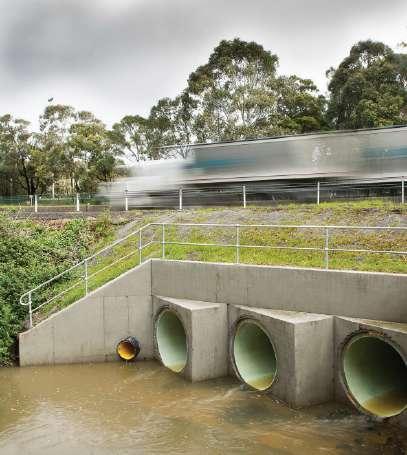





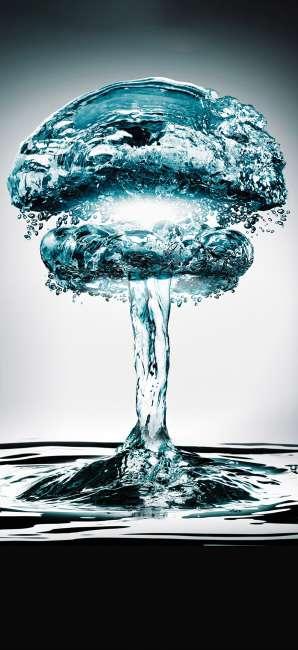
Julie Bishop on the water expertise Australia presents to the rest of the world.
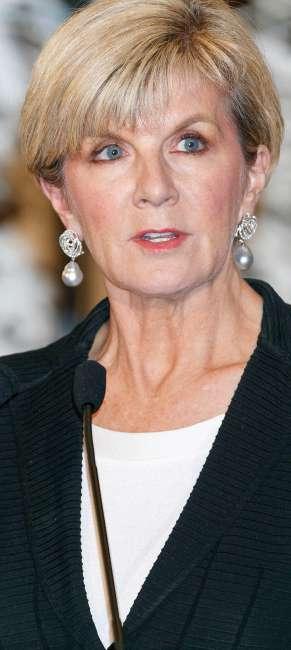
This mentor-mentee duo shows that some mentoring relationships go beyond boundaries.
With water in short supply as a result of a number of factors, what needs to be done to preserve the remaining water on earth?
Going beyond the scandals and political duels surrounding the Murray-Darling Basin.

Technology for the water sector goes beyond a nice-to-have to a must-have in the aid of productivity.
The water industry is one that’s lagging behind in encouraging women to step up, but change needs to first come from within.
Industry and academics are collaborating to improve the management of critical water mains networks.

Australian Water Association: How big are the opportunities for the Australian water sector to share its expertise globally?
Julie Bishop: As the pressure for international water reform increases in response to scarcity, new opportunities are emerging for Australian businesses to become engaged in the design, modelling and monitoring of new investments in water.
The world may face a 40% shortfall in water availability by 2030. If we do not act, change our path and diversify the resources we use, the world cannot achieve Sustainable Development Goals (SDGs) as a whole.
In this sense, Australia has much to offer. We hold considerable expertise in demand water management and supply systems, irrigation projects and water sensitive urban design.
We also have valuable expertise in delivering water, sanitation and hygiene in emergencies. In 2016-17, we deployed 14 water, sanitation and hygiene experts to support crisis responses in the Middle East, Africa, Asia and the Pacific.
We also provided training in Asia and Africa to strengthen the capacity of government and humanitarian agencies to deliver emergency water, sanitation and hygiene services.
I welcome the efforts of the AWA’s International Program to help share the expertise and experience of its members with countries and water associations in the Indo-Pacific region.
AWA: As the Foreign Minister, how are you helping sell that expertise to the world, and what have been some of the biggest success stories? Bishop: The Australian Water Partnership (AWP) is a $20 million investment over four years, which shares our management expertise with countries in the Indo-Pacific, many of which are facing water shortages and scarcity.
More than 40 activities in countries across the Indo-Pacific region have been set up in the partnership’s first two years.
In Myanmar, the AWP has trained more than 25 local water professionals in basin management ahead of the development of its largest river basin, the Ayeyarwady. Australia is also proud to be supporting
the East Meets West Foundation to develop Vietnam’s private sector in rural water supply. Innovations will cover both technological solutions such as web-based tools so communities can manage health risks from water quality, new piped water connections implemented by private enterprises and regulatory reform.
Another example is the Alliance for Water Stewardship (AWS), which receives $600,000 worth of support from the AWP. The AWS works with members of the Australian Council of Textile and Fashion to achieve sustainable and responsible clothing production. The AWS works with the Better Cotton Initiative (BCI) to provide a holistic supply chain solution for water management so consumers know where their clothing comes from and how it is made.
Australian companies like Cotton On, Pacific Brands and Country Road are working with AWS in China and Pakistan, where many of their factories are based.
The government’s innovationXchange is driving new and cost-effective solutions to address development challenges in the water sector, including through
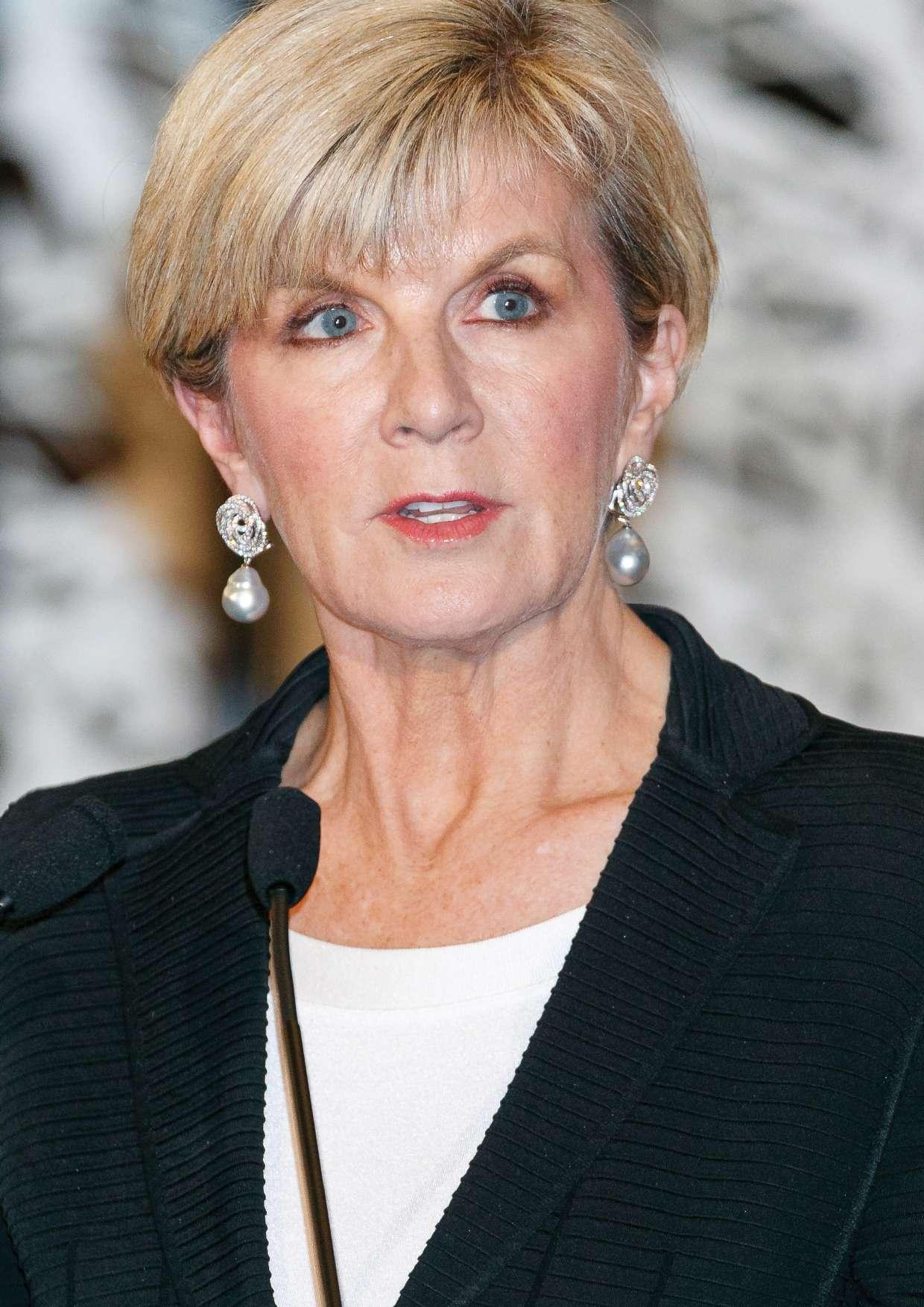
In partnership with the Tata Group, this US$1.75 million competition is challenging teams to alleviate the global water crisis with energyefficient technologies. Teams have to harvest fresh water from thin air by extracting 2000L of water per day from the atmosphere, using 100% renewable energy, at a cost of no more than $0.02 per litre.
AWA: How can Australian suppliers take greater advantage of overseas opportunities?
Bishop: Businesses can join the Australian Water Partnership and participate in the Australian Water Association’s outbound trade missions and capacity building workshops in countries such as Vietnam, Indonesia and South Korea.
Australian businesses wanting to take advantage of these emerging opportunities can build relationships, networks and partnerships with like-minded companies based in Asian countries. Austrade can also connect businesses with companies and government agencies in the region.
AWA: What were some of the issues discussed at the recent High Level Panel on Water (HLPW) in New York?
Bishop: The panel considered how to deliver concrete action to shift
the way we think about and value water. Achieving SDG6 and other related targets in the 2030 Agenda for Sustainable Development were a priority.
As Foreign Minister, I had the opportunity to launch the Water Innovation Engine, a US$6 million Australian initiative to find and fund new solutions to water and sanitation problems. At the meeting, panel members also endorsed a panel statement on Addressing the Drinking Water, Sanitation and Hygiene Challenge.
Other key issues included emphasising the importance of the adoption of the United Nations General Assembly (UNGA) Resolution on the International Decade for Action ‘Water for Sustainable Development’ 2018-2020, initiated by the panel as a way of building global momentum to achieve SDG6.
AWA: What are your biggest goals for this project, and its initiatives?
Bishop: Australia will work with the HLPW to achieve the world’s water and sanitation goals, which are to ensure safe water and sanitation for all people by 2030. As a member of the panel, we are supporting three particular initiatives that will help provide safe and affordable drinking water and adequate sanitation to the poorest and most vulnerable.

AWA: You are passionate about women’s rights and stand by the Federal Government’s Water for Women Fund. What are you hoping to achieve with it, and why?
Bishop: Water for Women is a $110.6m investment to help women in our region, including the Pacific. The fund will ensure women and girls have equal opportunity, representation, work and involvement in water, sanitation and hygiene (WASH) projects.
For example, we will work on getting better WASH facilities in schools for girls, so that menstruation no longer means not being able to attend school.
Water and sanitation issues disproportionately affect women and girls due to biological needs such as: menstrual hygiene management and maternal health; social norms including water collection; and risks such as sexual assault.
The fund is a tangible result of the government’s aid policy, which establishes gender equality and women’s empowerment as a priority for development.
The Association, in collaboration with the Australian Water Partnership, is focused on increasing equality and diversity in the water sector through the channeling change program. To learn more, visit: bit.ly/awa_channelingchange







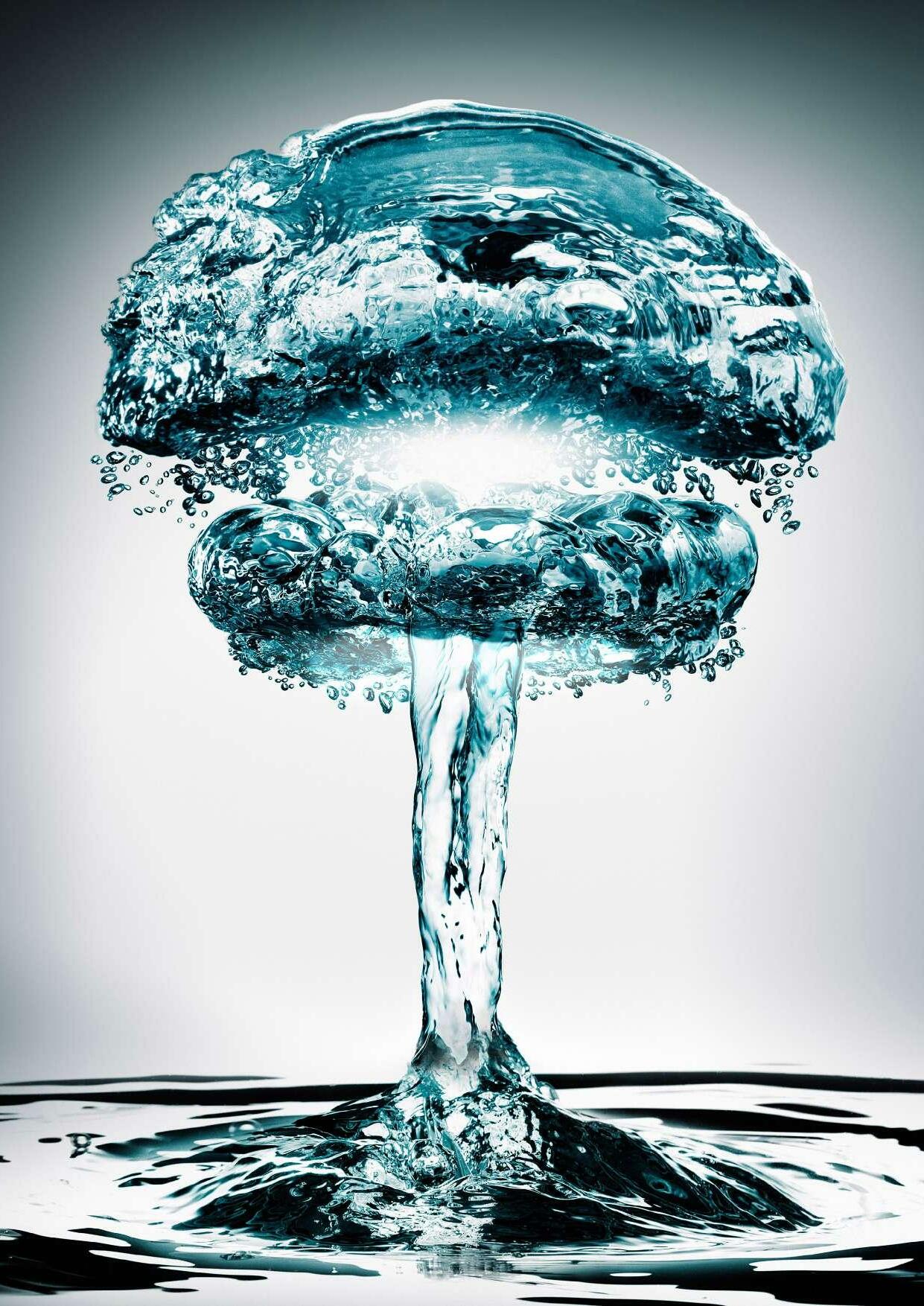
Shortly before 8am on a Monday morning in 1967, the Israeli Air Force launched almost every single one of its jets skyward. Minutes later, they streaked across the Egyptian border from multiple directions, targeting military airfields and laying waste to almost the entirety of Egypt’s military aircraft arsenal.
By the following Sunday, the Six-Day War had ended with a ceasefire; close to 20,000 people had been killed, about 400,000 Palestinians and Syrians were displaced, and Israel had tripled the area it controlled.
Though the exact causes of the conflict are still under debate, Israel emerged from it with control of the West Bank’s mountain aquifer and the Sea of Galilee, supplying Israel about 60% of its water supply.
Water, and conflict over its control, has helped ignite conflicts for millennia, said Dr Peter Gleick, president of California’s Pacific Institute, which maintains a sprawling database of water conflicts, historical and contemporary.
“Most concerning, however, is an uptick in the numbers of such incidents in recent years, and especially an increase in both violence related to fundamental access to basic water services and intentional attacks on water infrastructure in conflicts that begin for other reasons, especially in the Middle East,” Gleick said.
“Pressures on water resources around the world continue to grow. The growing threat of conflicts over these resources is both disturbing and a call to action.
“Researchers, water experts, diplomats and the military need to improve their understanding of the links between water and security and work to reduce the risks of conflict.”
The risks have attracted the attention of the US intelligence community, with a 2012 report by the Office of the Director of National Intelligence finding that by 2022, water pressures could escalate. “Historically, water tensions have led to more watersharing agreements than violent conflicts,” the report found.
“However, we judge that as water shortages become

future water shortages and a well-established pattern of water problems aggravating regional tensions.”
But as dangerous a catalyst as water can be for conflict, cooperation over the resource can also be an extremely powerful tool for peace across national boundaries.

“All of human civilisation is, in some sense, a struggle for the control of water,” said Alok Jha, author of The Water Book: The ExtraordinaryStoryofOurMostOrdinarySubstance

“There is a power structure with water. The location of water supplies and control of that water plays an important factor in political power. Control of water how it flows and who has access to it, it’s an incredibly important thing. You need access to ports, clean water to drink, to build microchips and computers – we need it for everything.”
Water crises is the top global risk of highest concern for the next 10 years, according to a 2016 World Economic Forum survey, followed closely by climate-change mitigation and adaption, extreme weather events, food crises, and profound social instability. Many of those causes are of course linked, as demonstrated by the ongoing crisis in Syria.
Research published in 2015 in Proceedings of the National Academy of Sciences found that an extreme drought between 2006 and 2009 was likely due to climate change.
That drought – the worst in modern times – caused crop failures that spurred 1.5 million Syrians to migrate from rural to urban areas, sparking the violent uprising that has so far caused almost half a million deaths. It has also destabilised much of the surrounding region. Since the civil war broke out, hundreds of thousands of refugees, many of them farmers, have fled southern Syria. As a result, much more water now flows through the Yarmouk River, the largest tributary of the Jordan River,
meaning greater quantities of water are flowing through Jordan, and eventually into Israel.
Besides further complicating transboundary water management issues in the region, there are now more than half a million Syrian refugees living in Jordan, one of the world’s driest countries.
“Through climate change, there will be climate-induced movement of people,” Jha said. “People will have to move elsewhere as some parts of the world will dry up and others will get very wet. Humans will have to make some fundamental changes to infrastructure.”
The ongoing conflict in Syria also highlights another aspect of water in conflict – its use as a weapon. From the outset of its campaign, ISIS treated water access and control as a primary goal. The group commandeered canals, dams, reservoirs and other water infrastructure to cement territorial gains, at one point threatening to flood Mosul and Baghdad by destroying the Mosul Dam, which they had briefly captured.
Meanwhile, in 2016, protesters in northern India sabotaged the Munak canal, which supplies New Delhi with three fifths of its water, leaving more than 10 million people in the capital without water. At least 18 people were killed and 200 injured after the Indian Army intervened to reopen the canal.
In South Africa, early 2018 was marked by angry protesters in Cape Town chanting “Water for all or the city must fall”, in response to a water crisis that has left the city of almost half a million set to run out of water by mid-April. Violence has already marred the use of a natural spring opened to the public, while elected officials have come under intense scrutiny for allowing the situation to deteriorate.
However, for all the fear over water conflict, many believe it is more likely to prompt violence domestically, rather than internationally. In 2015, Dr Therese Sjömander Magnusson, Stockholm International Water Institute (SIWI) Water Boundary Management
Partition divided the Ganges River between Bangladesh and India due to construction of the Farakka barrage by India in 1962.
Increased tension lead to constant unrest until a 30 year treaty was signed in 1996.
Partition leaves the Indus basin divided between India and Pakistan. Irrigation disputes ensue and India stems flow of water into irrigation canals in Pakistan. An Indus Water Agreement was reached in 1960.
Israel destroys the Arab diversion works on the Jordan River headwaters. During the Arab-Israeli War, Israel occupies the West Bank and Golan Heights, where the Banias tributary is located.

Director, used a conference session to attempt to dismantle what she called the myth that water leads to war. Despite about 2000 interactions over transboundary basins in the last five decades, Sjömander Magnusson said, just seven involved violence.
“During the same time, more than 200 agreements and treaties on transboundary waters have been signed.”
“In an insecure world that we are facing right now, with many unstable situations, what we’ve seen over and over again is how governments are eager to position themselves as stable countries open to cooperation,” she said.
She gave the example of the Jordan River, which runs along the borders of Jordan, Israel and the Palestinian Territories.
“This is the only platform where these countries have met for the past couple of years,” she said.
In fact, research by think tank Strategic Foresight Group found that of the 148 countries that share water resources, 37 that are deemed at risk of war happen to be those that do not engage in active water cooperation with their neighbours.
Legislative cooperation has long been a tool for constructive and mutually beneficial conduct for sustainable development, utilisation and conservation between nations. In Southeast Asia, the Mekong River Commission is an example between the four riparian nations.
The Mekong starts in the mountains of southern China and flows through Laos, Thailand, Cambodia and Vietnam before it reaches the South China Sea. The governments of the four countries founded the Commission in 1995 to facilitate regional cooperation in water management. It’s an attempt to manage competing demands over water use, including for irrigation, industry, power generation, transport and domestic use.
“Broadly these are several issues that affect transboundary water cooperation. Considering the basic context of the situation includes understanding the biophysical conditions of the river,” said Yumiko Yasuda, Senior Network Officer at Global Water Partnership, an international network focused on an integrated approach to water resources management.
“There is also the socio-economic context to consider, which is very important and includes population, industry and development, as well as the overall political context. In our studies we’ve identified the institutions, both formal

In 2015, Israel and Jordan signed the Red Sea-Dead Sea Water Conveyance Project.
Known as the Red-Dead project, the $US10 billion plan highlights the pragmatism of transboundary management. The major water cooperation agreement was hailed as the “most significant agreement since the peace treaty with Jordan” by Israeli officials.
The project will connect the Red Sea to the Dead Sea via a 200km pipeline that will transport 100GL of water every year.
The project aims to supply water for both nations as well as replenish the Dead Sea, which has been shrinking
in recent decades thanks to the diversion of 98% of the Jordan River.
The Red-Dead project includes a proposed desalination plant that would be the largest in the world, as well a seawater intake structure; an intake pump station; a seawater pipeline; a desalination brine conveyance pipeline; two lifting pump stations; hydropower plants; and discharge facilities at the Dead Sea.
Despite a November 2017 diplomatic incident involving the temporary shutting of the Israeli embassy in Amman, the project continues to move forward.
South African troops move into Angola to occupy and defend the Ruacana hydropower complex. Goal is to take possession of and defend water resources of southwestern Africa and Namibia.
177 civilians are killed over opposition to the Chixoy hydroelectric dam in Rio Negro.
South Africa supports a bloodless coup in Lesotho due to conflict over the ANC, anti-apartheid and water. New government signs Lesotho Highlands water agreement with South Africa after 30 years.


and informal, that can influence the outcome of a water issue; informal ‘institutions’ [are things] such as socially deeply embedded practices and beliefs and how that impacts people and formal agencies – the sentiments behind land rights in Israel and its neighbours are an example.”

The importance of participation in multilateral treaties for water cooperation is stressed by Stephen McCaffrey, Professor of Law at the University of the Pacific in Sacramento in California, and an international water law expert.

“These agreements are symbiotic in character, providing somewhat different ways for the achievement of the same end: the cooperative use, management and protection of shared surface and underground water,” McCaffrey said.
Water scarcity has seemingly offered a chance for cooperation between different groups, and as a potential path towards political stability and economic opportunity.
Non-governmental bodies have a record of successfully influencing positive transboundary water agreement and conflict mitigation.
For example, civil society representatives and scientists from China, India and Myanmar gathered in Myanmar in December 2012 to plan the transboundary management of the BrahmaputraSalween Landscape, a biologically rich ecosystem shared by the three countries.
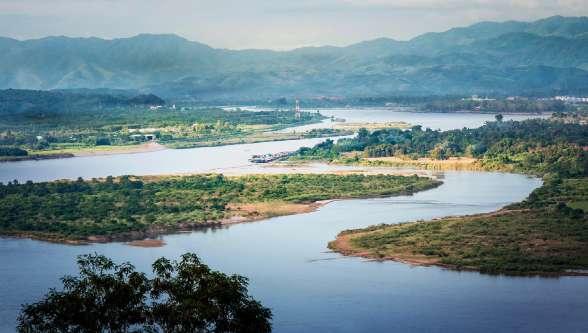
The regional transboundary landscape initiative now facilitates joint actions among countries through a regional cooperation framework, and also helps support integrated conservation and water management actions on a national level. “We found that civil society can play a pivotal role in transboundary water issues,” Yasuda said.
“In terms of water diplomacy, starting from state to state bilateral action can sometimes become too contentious. Civil society actors can often take different approaches, often have more freedom to act in different ways than state actors, which allow them to bring different stakeholders together.”
But in order for water legislation of any kind to be effective, modified approaches to each situation are necessary. “There is knowledge you can transfer in terms of technique, but you have to remember that it’s not a one-size-fits-all model, due to the variety of contexts,” Yasuda said.
The importance of flexibility and local context in those agreements is only set to increase, as climate change disrupts established weather patterns and water flows, SIWI’s Sjömander Magnusson said. “Many treaties on transboundary waters probably need to be revised in line with the new climate change data and be a bit more flexible to cope with the extreme weather events.”
Controlling the access to, and the use of, water will continue to shape political and social tensions across the globe.
Australian Water Association CEO, Jonathan McKeown said “the management of our own Murray Darling Basin with its deficient compliance regimes, its complex needs to balance economic, social, and environmental outcomes is a domestic example of a much wider global challenge. At least our state borders are jurisdictional rather than military.”
While the lessons of managing the Murray Darling Basin can be helpfully shared overseas, McKeown downplayed the relevance of this because “solving international water disputes is about different cultural and political issues being resolved
The Ferghana Valley is shared by the three countries and is especially vulnerable to eruptions over water access and ethnicity. In 1990, 300 people died in the Kyrgyz town of Osh on the border of Uzbekistan over competition for water, limited arable land and ethnic tensions.
The US deliberately pursues a policy of destroying Iraq’s water systems through withholding contracts and sanctions, following the Allied Coalition forces intentional and unintentional damage to Baghdad’s modern water and sanitation systems during the war.
MANY TREATIES ON TRANSBOUNDARY WATERS PROBABLY NEED TO BE REVISED... DR. THERESE SJÖMANDER MAGNUSSON, SIWI
Covering more than 800,000 hectares, the Danube River Basin is the world’s most international; the catchment area takes in 80 million people and 19 countries.
The Basin has been governed by multilateral agreements and various forms of international administration almost continuously since 1856.
These historical treaties and agreements largely focused on improving navigation, commerce along the waterways, flood control and hydro power.
Despite two world wars and multiple regional conflicts, the countries have largely been able to cooperate in the Danube’s management. Today, it is governed via the Danube River Protection Convention (DRPC).
Eleven of the 19 Danube riparian states – Austria, Bulgaria, Croatia, the Czech Republic, Germany, Hungary, Moldova, Romania, Slovakia, Slovenia and Ukraine – and the European Community signed the Convention in 1994, and it came into force in 1998.
The signatories to the DRPC have agreed to cooperate on fundamental water issues and ensure that surface waters and groundwater within the Danube River Basin are managed and used sustainably and equitably.
There are defined monitoring parameters, laws on liability for cross-border pollution, rules for the protection of wetland environments and guidelines for conservation areas.
The processes can help facilitate cooperation and prevent conflict over the management of international waters, and have also played a role in managing transboundary disputes.
While the strategic and integrated management of the Danube River Basin environment focuses initially on priority environmental issues, their strategy of an integrated, participatory, and coordinated group effort also impacts multinational cooperation in other sectors.
locally rather than the imposition of a model that we are still getting to work in Australia”. McKeown says Australia has much more to offer internationally from the Australian lessons learnt through:
• national competition reforms from 1994 that led to a new regulatory approach to water management;
• water recycling systems, desalination and strategies to reduce water consumption in times of drought;

• innovative technologies and systems providing clean drinking water;

• creative partnerships between public and private water suppliers;
• integrated urban planning linking water with livability and
• innovative agricultural techniques and infrastructure requiring less water.
The Association actively facilitates the transfer of this Australian water expertise across Asia through its International Program that has been supported by the Department of Foreign Affairs, the Australian Water Partnership, state governments, and private sector participants.
The program has been built on reciprocal agreements with other peak national water organisations in the region.
The Association has taken more than 300 water professionals to Asia over the past three years and includes outbound and inbound trade delegations, water technology demonstrations in remote and rural areas, water utility twinning projects, and projects focused on empowering and training women through the transfer of Australian water expertise.
During the Syrian civil war there was major damage to the key pipeline delivering water to Aleppo, causing the city of three million to suffer severe drinking water shortages.
During the Russia and Ukraine conflict, the water systems for the city of Donetsk was damaged and the Donbas Water company stopped three pumping stations from bringing water to the channel due to damages.
Hundreds of people were arrested and injured at protests over the construction of an oil pipeline that threatened water quality on and near Native American land.

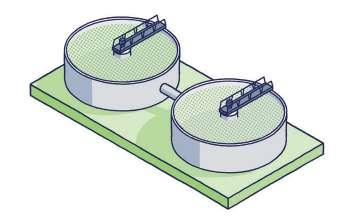
THE MURRAY-DARLING BASIN IS NO STRANGER TO EXPLOSIVE SCANDALS AND POLITICAL DUELS. WHAT WILL IT TAKE FOR SUBSTANTIVE REFORM TO EMERGE FROM ALL THIS SOUND AND FURY?
By Thea CowieIt’s crunch time for the Murray-Darling Basin Plan.
2017 brought no shortage of scandal, ill-will and frustration over the nation’s largest and most important waterway. And the tinderbox threatens to combust in an election-fuelled 2018. “Those who seek to undermine the plan are bringing forward a raft of proposals that will bite chunks out of the plan and diminish its effectiveness. This year is the crunch year for the plan,” said Jamie Pittock of the Wentworth Group of Concerned Scientists.
After an explosive Four Corners report unveiled serious allegations of water theft and maladministration, no fewer than nine investigations have been proposed, launched or expanded.
The July report – ‘Pumped: Who is benefitting from the billions spent on the Murray-Darling?’ – and revelations in its wake, prompted the launch of a federal Senate Committee inquiry and calls for a federal royal commission.
A National Audit Office review was expanded, and the MurrayDarling Basin Authority was directed to conduct a strategic review of compliance and enforcement regimes.
And in November 2017, South Australian Premier Jay Weath erill announced a state royal commission into alleged water theft.
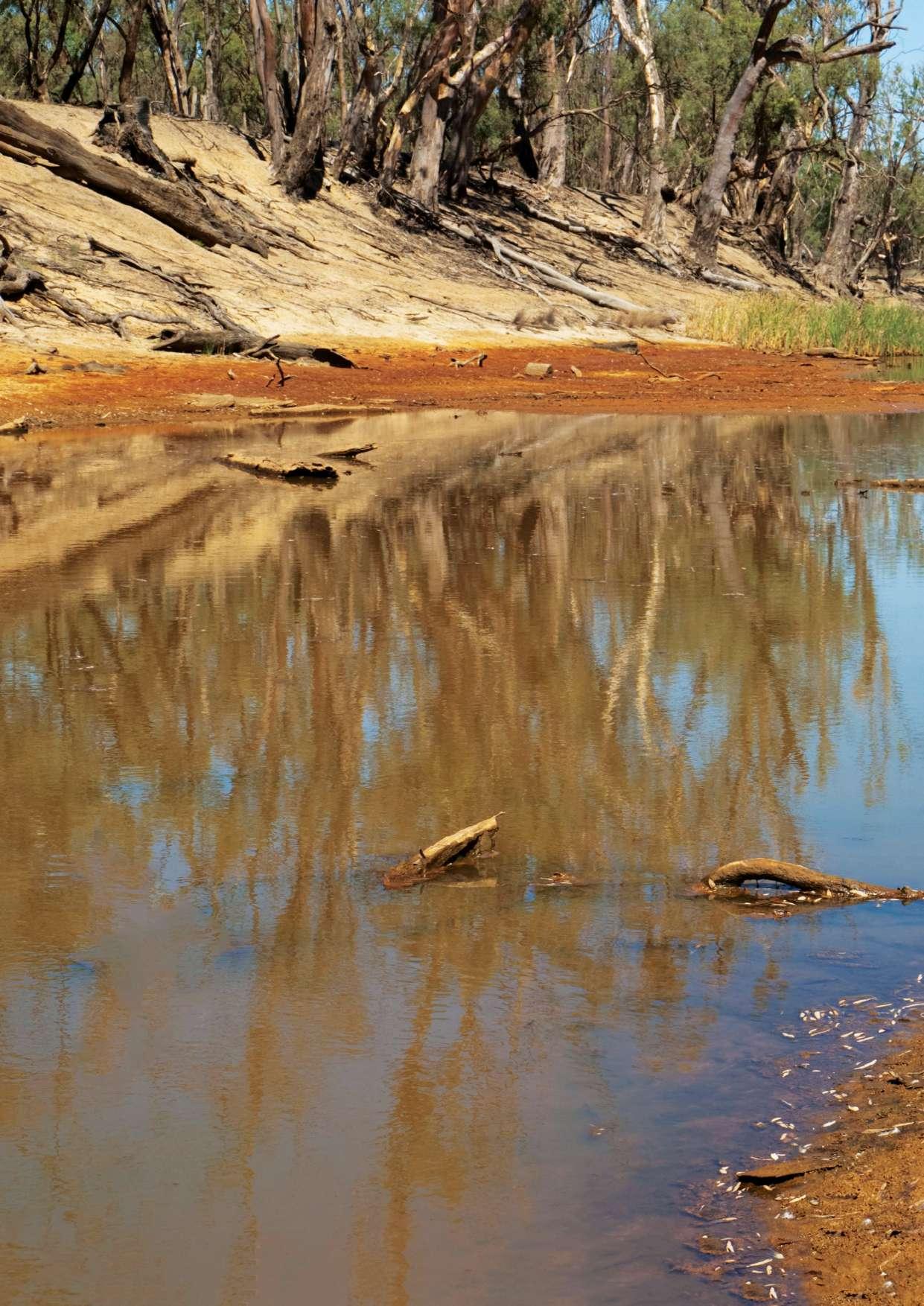
Federal Assistant Water Resources Minister Anne Ruston dismissed it as “just another stunt” and Prime Minister
Malcolm Turnbull accused Weatherill of “picking a fight” with the Federal Government and upstream states.
Meanwhile, New South Wales Regional Water Minister Niall Blair said the royal commission could very well double-up on investigations within his state.
He added that NSW was already implementing findings from Ken Matthews’ interim report – Independent investiga tion into NSW water management and compliance – which noted a “systemic fix” was required and recommended a “far reaching reform package”.
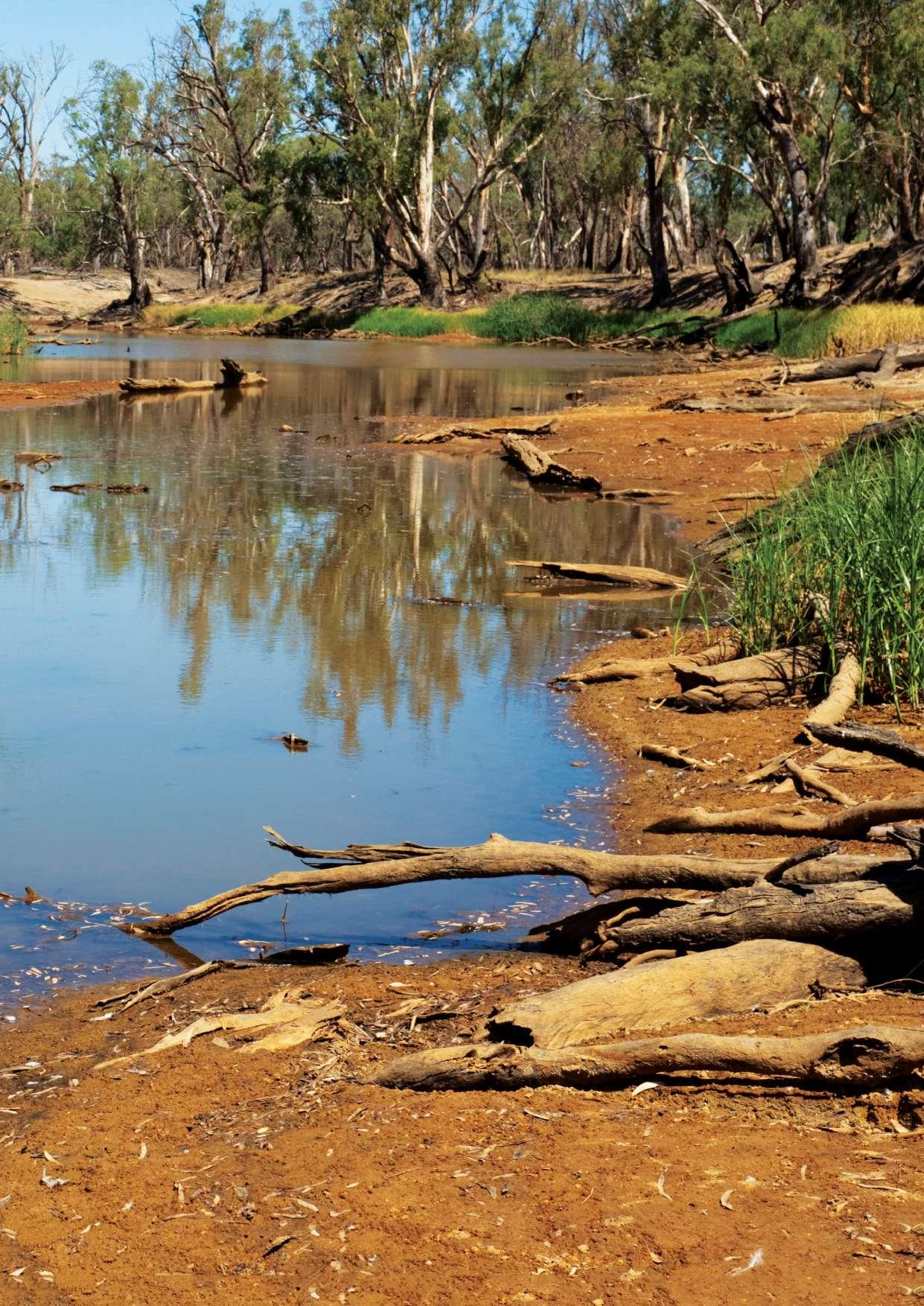
Other NSW investigations underway include an ombuds man’s probe, the interim report of which revealed that since 2006 the ombudsman’s office received dozens of protected disclosures alleging water management principles and rules were not being complied with.
Meanwhile, the NSW Independent Commission Against Corruption is also investigating former Water Minister Kevin Humphries and former DPI Deputy Director Gavin Hanlon.
Despite the extensive inquiries, National Irrigators’ Council CEO Steve Whan said the number of accusations and complaints represented only a tiny portion of irrigators
The Government takes extremely seriously any allegations of water theft. Several reviews now underway are in response to allegations of water theft and maladministration and the Government is committed to ensuring that these processes do not delay the full implementation of the Basin Plan as agreed by COAG in June 2017.
SHADOW MINISTER FOR WATER TONY BURKE: It’s only since the National Party got hold of the water portfolio that things have started to go awry. The plan now [faces] two essential challenges. The first being to make sure that the whole plan is delivered, not simply half of it. The second is ensuring that proper scrutiny is given to water rights and the water trading system.
WATER MINISTER IAN HUNTER:
A Royal Commission is the only credible way we can investigate the depth and the breadth of allegations and review the way we are managing one of our nation’s most precious resources.
We support calls to re-establish a National Water Commission that can provide unbiased advice on how the Basin Plan and water reforms are being implemented.
REGIONAL WATER MINISTER NIALL BLAIR:
The establishment of the Natural Resource Access Regulator is the first significant step towards addressing concerns raised by the Matthews Report and the NSW Ombudsman.
The NSW Government accepted the recommendations in the interim report and is working towards implementing them.
Like other Basin states, NSW is open to constant review and improvement of water management across the Basin.
DEPARTMENT OF NATURAL RESOURCES AND MINES SPOKESPERSON:
Queensland’s Murray–Darling Basin Plan is the first and only plan officially accredited by the Commonwealth Government.
The Department of Natural Resources and Mines is currently undertaking an independent audit of metering, measurement and compliance processes and systems to ensure that appropriate policy and practical processes are in place to manage water in the basin and throughout Queensland.
COMMISSIONED BY: State Government
Allegations surrounding water theft upstream the Basin has prompted SA Premier Jay Weatherill to launch this royal commission and identify perpetrators.
COMMISSIONED BY:
Commonwealth Senate
CONDUCTED BY: Rural and Regional Affairs and Transport References Committee inquiry REPORT DUE: March 2018
BACKGROUND: Former NSW Water Minister Kevin Humphries and former DPI Deputy Director General Gavin Hanlon have been referred to ICAC.
ICAC said it “only discloses its investigation activity when it is in the public interest” (Independent investigation into NSW water management and compliance, Interim Report).
BACKGROUND: The NSW ombudsman’s progress report stated that since 2006, its office has received public interest disclosures of water management rules not being complied with.
Acting NSW Ombudsman Professor John McMillan previously said, “It’s a pity we didn’t get this out a hell of a lot earlier”.
COMMISSIONED BY: State Government
CONDUCTED BY: Three independent water experts
SCOPE: Identifying limitations with existing measurement and metering frameworks, providing options for improving the frameworks and adopting improved technology.

REPORT DUE: March 2018
“According to the Australian Bureau of Statistics, in the MDB there are 9200 businesses that irrigate and what we’ve seen is accusations, not yet proven against three,” he said.
“Irrigators pay a lot for water and if somebody else is rorting the system, they’re getting an advantage over people doing the right thing, so it’s important that we see compliance working properly.”

AWA Chief Executive Jonathan McKeown said individually, the allegations “should not be overstated” in terms of their impact on the operation of the plan. “But if the examples turn out to be more systemic in nature then it can go to the credibility of the plan,” he said.
“Once the community has lost confidence that the plan is being enforced and worth preserving, you’ve got a serious problem in terms of the longevity of the plan.”
The $13 billion Murray-Darling Basin Plan was created after a decade of painful negotiations reached bipartisan agreement in 2012.
But, five years on, there are serious political cracks emerging in the plan to recover 2750GL of water from irrigated agriculture and return it to the environment.
South Australia’s Water Minister Ian Hunter said the state had “lost all confidence in [Prime Minister Malcolm] Turnbull’s ability to deliver the Murray-Darling Basin Plan on time and in full”.

He pointed to revelations that the Federal Government paid $78 million to buy back an agricultural company’s water rights –almost double the amount recommended by the Australian Bureau of Agricultural and Resource Economics and Sciences (ABARES).
“There needs to be a royal commission to look into the serious allegations of water theft and corruption that have engulfed the NSW and Commonwealth governments,” Hunter said.
Additionally, Nature Conservation Council Chief Executive Kate Smolski has called for the water portfolio to be removed from the National Party at both the state and federal level.
“It appears National Party ministers have sat on its hands while big irrigators game the system to the detriment of the environment and downstream communities,” she said.
A Federal Government spokesperson, however, has said the government is committed to delivering the plan on time and in full.
COMMISSIONED BY: Council of local governments
CONDUCTED BY: MDBA and an independent panel
RECOMMENDATIONS:
• Deliver a ‘no meter, no pump’ policy
• Improve confidence in measurement of floodplain harvesting in the northern Basin
• States review of hydrometric networks, compliance, governance and legislative arrangements
NSW and Victoria accelerate preparation of Basin Plan-compliant water resource plans
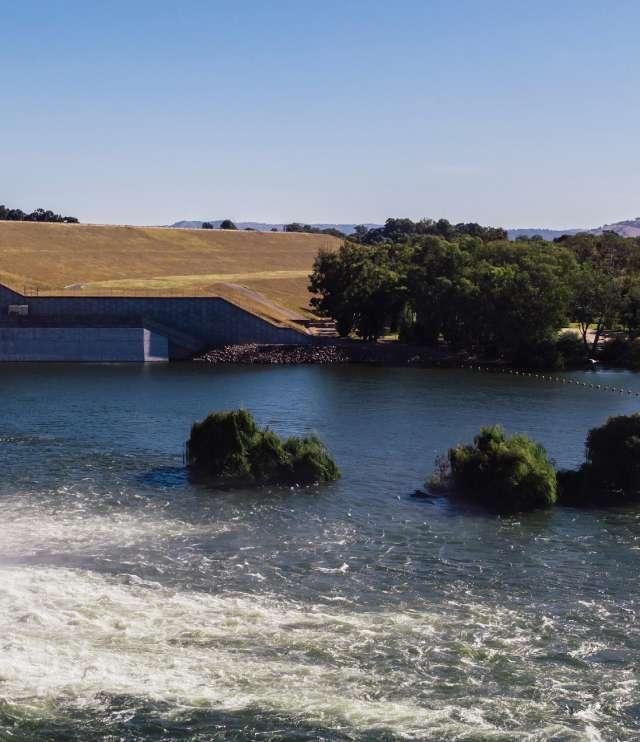
NSW and Queensland revise water resource plans
fully implement
a Basin Compliance
“Implementing the Basin Plan is a difficult and complex task, but it’s our best and only option to improve this vital river system,” the spokesperson said.
The government also said it remains committed to the 2004 National Water Initiative and its long-term objectives.

That’s despite upholding the Abbott Government’s 2014 abolition of the National Water Commission – the body charged with monitoring, auditing and assessing progress on the NWI.
The commitment of the NSW and Victorian Governments to the MDBP has also been questioned in relation to proposals around the adjustment mechanism, Northern Basin Review and Sustainable Diversion Limits.
The Wentworth Group’s Pittock said their proposals “could effectively destroy the plan”.
“We’ve seen NSW and Victoria basically seek to scuttle the plan by putting forward most inadequate proposals that don’t move enough environmental water below the middle reaches of the Murray,” he said.
All this controversy has lead to speculation over the future of the plan, with headlines pondering if the MDBP is broken and if it’s time to ditch the Plan.
NSW Regional Water Minister Blair said: “To suggest the Basin Plan is a silver bullet with immediate impact is foolhardy. Progress is incremental and NSW is delivering the MDBP in a way that balances economic, environmental and socio-economic concerns.”
The Irrigators’ Council has also backed the plan going forward.
“People who are trying to turf the plan, or saying that it’s not enough, are doing something which would plunge us all into many decades more of uncertainty and not being able to guarantee the health of the river,” National Irrigators’ Council’s Steve Whan said.
Yet, something needs to be done to rectify the issues that have bubbled to the surface this past year – whether it’s via a royal commission, judicial inquiry or the various investigations already underway.
AWA’s McKeown said, community support for the plan may well dissipate, particularly if a lack of action is turned into a political
COMMISSIONED BY: NSW Government CONDUCTED BY: Ken Matthews AO
– independent reviewer and leader of the investigation INTERIM REPORT FINDINGS: Water-related compliance and enforcement arrangements in NSW require significant improvement, including:
Establishing a NSW Natural Resources Access Regulator
Introducing a “no-metering, no pumping” rule
Enabling easy public access to all details of an individual’s water entitlements, licence conditions and water trading activities.

After the Four Corners program, the ANAO expanded its audit of payment arrangements under the National Partnership Agreement (NPA) to “ensure a focus on how the Commonwealth Department of Agriculture and Water Resources was monitoring the performance of NSW under the National Partnership Agreement on Implementing Water Reform in the Murray-Darling Basin”.
FINDINGS/RECOMMENDATIONS: The independent assurance report identified a lack of specific, measurable deliverables and outcome measures in the milestones and criteria for assessing the performance of NSW under the Murray-Darling Basin NPA. It also found little in the Department of Agriculture and Water Resources’ submission suggesting risks in NSW delivering environmental water consistent with the plan.
NWP is consistent and fairly enforced across all jurisdictions,” McKeown said.
“Targets need to be incentivised through the release of payments to the states and territories in return for meeting certain NWP milestones.”
football. “That’s very dangerous
that we have a number of jurisdictions – including potentially the Commonwealth
looking at elections,” he said.
With interstate cooperation on the Murray-Darling Basin in jeopardy, many are looking for national authority on the issue.

The AWA proposes replacing the NWI and its aspirational targets with a National Water Plan (NWP) to achieve them.
“States and territories need to come together and provide certain powers to the national government to ensure that the
The proposed NWP would enact three national frameworks: water trading; water resource planning and urban water planning; and be implemented by a new independent national water authority reporting to parliament, not the minister.
The Wentworth Group’s Pittock broadly welcomed the proposal, adding that the water sector had an important role to play in restoring trust and cooperation.
“The water sector has tremendous credibility in terms of being very innovative and that can be turned to good advantage,” he said.
“Australian water companies have the technology that will provide solutions in terms of decent water metering and modelling water flows so that South Australia can begin to genuinely trust NSW.”




PEOPLE WHO ARE TRYING TO TURF THE PLAN... WOULD PLUNGE US ALL INTO MANY DECADES MORE OF UNCERTAINTY.
STEVE WHAN, NATIONAL IRRIGATORS’ COUNCIL























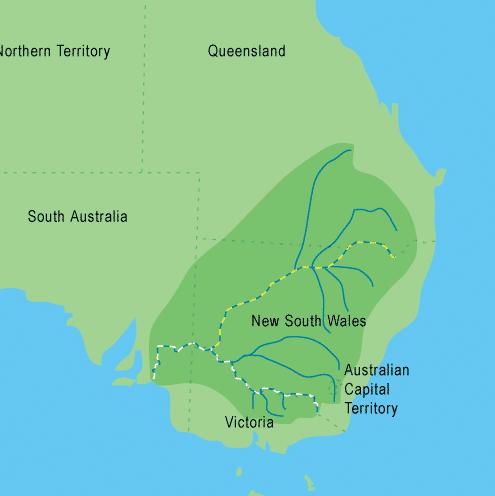
The River Murray Commission is established to oversee the agreement.
The Murray-Darling Basin Agreement is established, superseding the River Murray Commission and taking a broader scope.
The Millennium Drought begins.
The Council of Australian Governments (COAG) agrees to the National Water Initiative, elevating the importance of sustainable use of water resources. The National Water Commission is established to implement it.
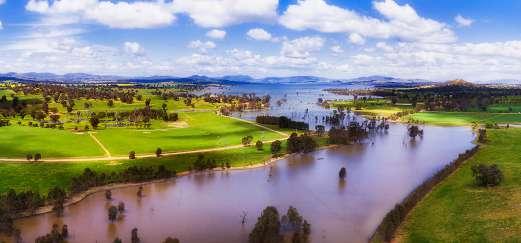
The MurrayDarling Basin Authority is formed, replacing the MurrayDarling Basin Commission.
The Murray-Darling Basin Plan is signed into law, aiming to redress the over-allocation of water licences and return more water to the environment.
The Basin environmental watering strategy is published, building on the Basin Plan, advising stakeholders of ways to plan and manage environmental watering at a Basin scale.
2020
New water trading rules are announced, aiming to reduce restrictions on trade, improve transparency and access to information and improve market confidence.
2024
In addition to releasing a five-yearly report on the effectiveness of the Basin Plan, the MDBA expects to conduct a five-yearly review of the environmental watering plan, water quality and salinity targets.
Amount of water estimated to have been over-drawn by farmers.
Amount the Federal Government has invested in the Basin since 2007-08 to implement water reforms.
money
irrigation infrastructure
efficiency programs.
The proposed time for the completion of agreed constraints measures and the completion of supply and efficiency measures for the SDL adjustment outlined in 2017.
Federal Government subsidises the coal, oil and gas sector annually, in comparison.


Leaks and water loss have long been a problem for many water utilities.
By Joshua HoeyAccording to the Bureau of Meteorology, non-revenue water loss in Australia, for the last five years, was more than 878,000ML, and leakage accounts for the majority of this loss.
While the figure is low in comparison to other countries, it’s still a significant loss of water and revenue, not to mention a constant drain on utility resources. But new technologies for leak detection could offer ways to reduce that burden.
From digital meters providing real-time data, to in-pipe robotics, infrared drones, smart pipes and grids, hand-held sensors, and even leak detecting canines, water loss prevention is set for a shake-up.
Real-time data on water flow and pressure is essential for any smart water grid. And to look at the feasibility of digital metering across Metropolitan Melbourne, its three main utilities –South East Water, City West Water and Yarra Valley Water – have joined forces in the Digital Metering Joint Program.
“If they prove viable and is what customers want, they could be rolled

out, but there’s still a fair bit of work to do,” Yarra Valley Water Service Futures General Manager Glenn Wilson said. He mentioned that digital meters could potentially provide thousands of real-time data points for leak detection and water usage.
“A trial in Craigieburn discovered eight per cent of homes less than five years old had leaks, and 30 per cent of homes aged around 30 years old had leaks,” Glenn said.
“The large leaks in some of the older households cost around $100 or more in wasted water per month.”
Currently, all three utilities are running technical trials individually to assess the viability of digital metering and associated networks.
Other utilities are turning to software from Israeli company TaKaDu to integrate data from their network of sensors to identify leaks.
Sydney Water is currently completing a trial of the software.
“It monitors SCADA network data to identify deviations from normal pattern for the early detection of leaks and other system anomalies,” Sydney Water Project Manager Roger Wood said.
In addition, Unitywater recently signed another three-year contract with TaKaDu, and credits the software with
identifying over 860 leaks and saving 1383ML of water.
“Before we implemented TaKaDu, we had losses equivalent to 100L per connection per day on the Sunshine Coast,” Acting Executive Manager for Customer Delivery Martine Watson said.
“TaKaDu has essentially been the eyes and ears for our network and instrumental in helping us operate it smartly and reduce our water loss.”
While various types of stationary acoustic sensors have been the stalwart of leak detection, affordable robotics and mobile sensors are entering the market.
The high costs of in-pipe robots in the oil and gas industry mean few have been adapted for water, but one MIT roboticist has developed a leak-detecting robot that he wants to give away for free.
The robot Daisy aims to detect changes in pressure and water flow in both steel and polyethylene pipes with impressive accuracy.
“In the last test we did, robot Daisy consistently located 4mm leaks to within a half meter under two bars of pressure,” its inventor and
Water Corporation has turned to a spaniel named Kep to sniff out leaks on long sections of underground pipes in rural areas of Western Australia, where acoustic detection isn’t suitable.

“We began the project after one employee heard about dogs in South Africa being trained to detect leaks underground by sniffing a substance with a distinctive smell, which had been added to the water,” Water Corporation spokesperson Louise Fleming said.
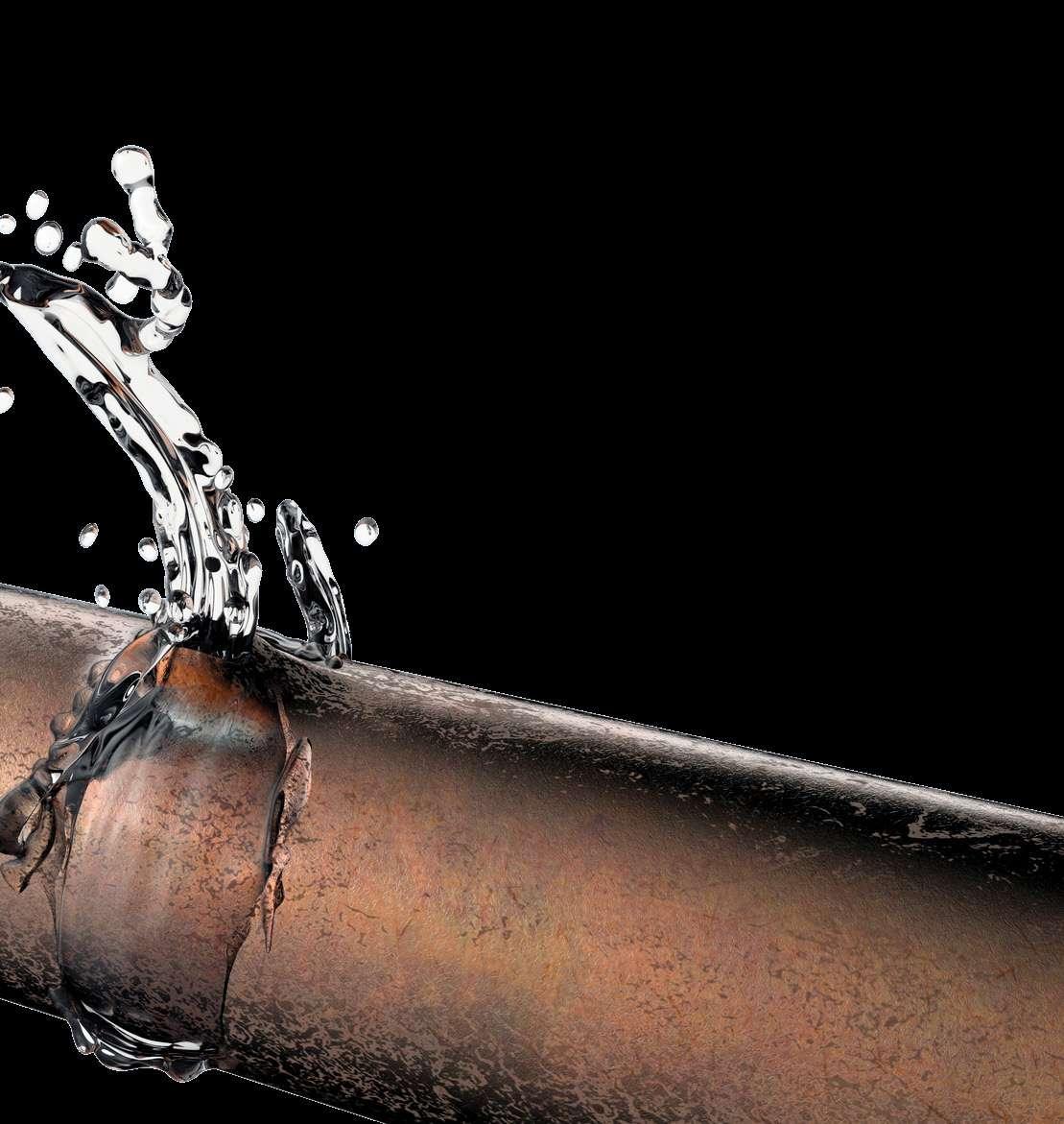

In the initial trial, two dogs –Emma and Tommy – usually used for feral animal, narcotics and explosives detection, were able to sniff out leaks in mains buried up to 60cm deep.
Kep is currently going through training in Sydney, but the utility has already scheduled

over 1000km of rural mains for her to work on.
“The dogs are trained to recognise the scent of scheme water, and ignore all other scents such as rain water, pipes and fittings,” Fleming said.
The initial trials have shown that the dogs are consistently able to find leaks, but Fleming said Water Corporation can’t determine the amount of water Kep will save until she starts work in the field.
Pipeguard founder You Wu said. Additional sensors on the robot can detect changes in pipe diameter, and its soft, rubbery body lets it easily bend and navigate pipe elbows, turns and diameter changes.
Unlike acoustic sensors, robot Daisy isn’t affected by ambient noise and detects tiny leaks before they become major ruptures.
“We are offering the capability to find small leaks before they grow, so water companies can perform proactive, preventative maintenance,” Wu said.
Each Daisy costs about $200 for materials, but Wu wants to build a data service company where it offers these robots as an addition to subscriptions, or even for free.
“Data will be uploaded to a cloud platform, and water utilities, based on their subscription, can pay for their results,” Wu mentioned.
Pipeguard is currently trialling robot Daisy with a utility in Virginia and has another 20 lined up for pilots in the US. An Australian pilot is expected next year with a Queensland utility.
While robot Daisy follows the direction of water flow, Wu believes the next decade we will see entire smart water grids with a network of sensors, autonomous valves, and a fleet of in-pipe robots that can be directed around the system as required. “The pipes themselves will be smart, the whole network is a robot, with tiny robots inside like cells in a vein.
“The system will be able to regulate flow and redirect those robots to sweep a problem area,” he said. Not content with robot Daisy, Wu has already begun
work on an in-pipe robot that can detect and then repair leaks.
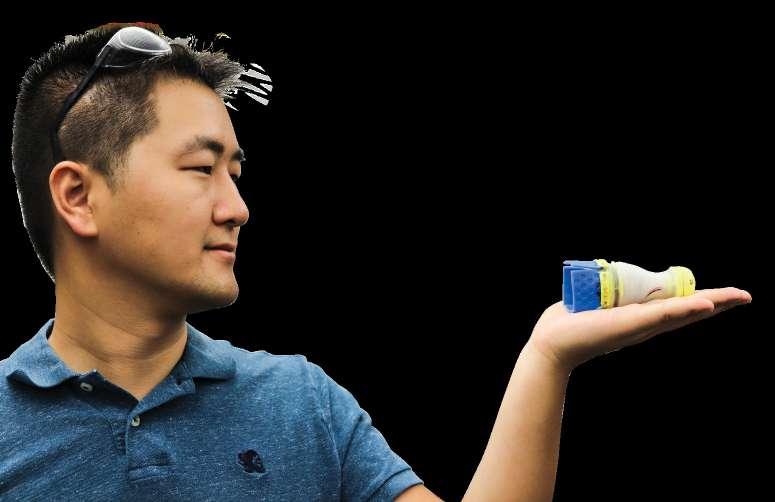
He expects it to be released in May.
“We’ve been using it on plastic pipes in the lab, but now we want to see how it works on metal as well.”
While the majority of utilities use stationary acoustic sensors to detect leaks, Israeli company Aquarius Spectrum has developed a range of mobile-compatible acoustic sensors to work as an adjunct to existing sensors. In the iQuarius system, once fixed sensors detect a leak, a utility crew can use mobile-compatible hydrophones and magnetic vibration sensors to pinpoint a leak to within a few centimetres.
“The Android application transforms the phone into a leak detection device. Compared to other technologies in the market where you need a load of equipment to do that, this simple kit lets you do the same thing faster and with more accuracy,” Aquarius Spectrum CEO Oded Fruchtman said.
Sound velocity changes with pipe material, diameter, and water pressure, so iQuarius can be easily calibrated for all these variables and is the main factor in the system’s accuracy.
iQuarius was developed with the algorithm based on trials with Thames Water, and has pilots planned for next year with Water Corporation and

a Queensland utility. Fruchtman said the mobile kit complements a fixed sensor system, but can stand alone, and costs around $3000 with an annual licence fee of $500.
It includes sensors, a listening stick, ground adaptor, headphones and accessories.
Rather than getting close to pipes, Anglian Water in the UK now uses drones equipped with infrared cameras to detect leaks across more than 38,600km of water pipes, much in rural areas.
Infrared imaging of pipelines captured via drone flight is analysed for ground temperature changes – cold spots in summer afternoons and hot spots on winter mornings indicate potential leaks.
“It’s been most successful in rural areas, where pipes are laid beneath soil, but the thermal imaging drones have also been successful on asphalt,” Anglian Water Intensive Leakage Delivery Manager Chris Utton said.
Anglian is continuing with trials of the drone system, but it has already resulted in significant cost and water savings.
“Finding and repairing leaks has resulted in £150,000 ($265,000) in CAPEX savings,” Utton said. “By using GPS, there’s also the potential to automate drone flight paths, further reducing costs.”

Ozwater’18 will take a close look at how technology is shaping asset assessment, including in-depth sessions of both airborne and floating drones, and robotic pipe probe testing.
Visit bit.ly/Ozwater to learn more.


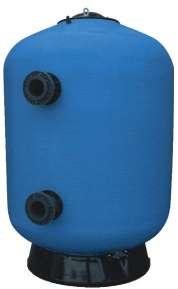


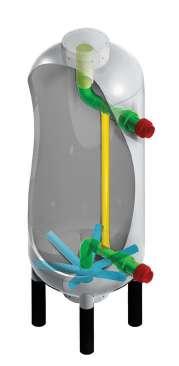



 By Chelsea Wallis
By Chelsea Wallis
Clare Porter remembers it as a challenge. In a conversation with her then-new boss, they were discussing roles and opportunities, when she enthusiastically announced that she was pregnant.
“He paused, pulled together all the notes of ideas and inspirations, folded them away into his bag, and said, ‘That’s very exciting for you’,” Porter recalls.
“I remember looking at his bag and literally feeling as if my career was over. I thought, that’s it, all this effort I’ve put into my career is compromised by my choice to have a family.”
Now, with 20 years in the water industry behind her and a role at Sydney Water as the Manager of Strategy, Planning and Resilience, Porter attributes her success to significant changes
in the water industry’s approach to gender diversity.

“I used to say, ‘I want a rewarding career but I also want to be a mum,’” she said. “At Sydney Water, I was clearly told to stop saying, ‘but’ and start saying, ‘and’. So now I say, ‘I have a rewarding career and I’m also a great mum.’”
Water industry leaders are adopting a large range of culture change initiatives, hoping to employ a more diverse workforce and encourage those employees, and women in particular, to stay in the industry.
Small results are already being felt; Workplace Gender Equality Agency figures show that since 2013, the proportion of women in management positions in the electricity, gas, water and waste services sector has grown from 19 to 22%. But much more remains to be done.
The Australian Water Association has taken a strong stance in supporting greater diversity across the Australian water sector with its own Channeling Change Program.
Association Chief Executive Jonathan McKeown said, “the Channeling Change Program is about empowering individuals with confidence to confront inappropriate behaviours or attitudes that
IMBALANCES OF GENDER DIVERSITY. WHAT TECHNIQUES HAVE PROVEN MOST SUCCESSFUL?
TO ME, THE FACT THAT I’M STILL ABLE TO HAVE A CAREER I’M PROUD OF WHILE ALSO DEVELOPING MY FAMILY LIFE, THAT IS SUCCESS.
– KATE HOULDEN, CITY WEST WATER
discriminate against gender, culture, age, disability, skills and sexual orientation”. “It’s about encouraging our managers, employers and staff to embrace greater diversity and inclusion for the commercial and cultural benefits delivered. It is also about recognising those leaders and organisations that are successfully addressing diversity and inclusion,” McKeown said.
While there are encouraging experiences to be shared, there is still much to change to embrace diversity and inclusion.
McKeown said it is the amount of conscious bias that still dominates the way many people think and act, holding them back from productivity and progress.
“This can be seen in outdated attitudes to management, leadership, stakeholder engagement, and even humour that is soaked in conscious bias,” he said.
The biggest impediment to culture change is acknowledging that we have a problem: invisible barriers to women entering and progressing in the sector.
City West Water General Manager of People and Capability Louise Meadows said when hiring, many often have unrealistic
expectations of experience that only men qualify for. “If you take a few years off to have a family, you’re automatically at a disadvantage for a job that asks for 25 years of experience in engineering,” she explained.
For City West Water, one of their initiatives is to focus less on the technical prerequisites and more on the leadership elements of the role. “Leadership is leadership,” Meadows said. “You don’t need 25 years’ technical experience to be an amazing leader.”
She said she has seen how changing the wording of job ads has made a difference.
For instance, “stakeholder managements” attracts fewer female applicants than “relationship management”. They highlight benefits such as flexible work hours and actively ask existing female leaders in the company to share and promote the post on social media.
Once City West Water identifies candidates for a senior role, the list is subjected to its gender-balanced panel to ensure any gender bias is eliminated.
“If we don’t have a gender-balanced shortlist, we’ll go back until we’re satisfied we’ve got the best possible 50-50 shortlist to choose from.”
When Meadows joined City West Water in 2016, female recommendations were at 28%. As of October 2017, that number had jumped to 40%.
“It’s not about compromising on quality of candidates; it means we have to work harder to get the best possible pool of talent to select the best possible candidate,” she said.
Companies like GHD are also taking steps to train managers about potential unconscious bias.

GHD Australian People Leader Catherine Drury-Fox said when there is a senior role in the pipeline, the executive group speaks to the leadership population to identify women they think well suited to the role.
“We encourage them to have a one-on-one conversation with these women to encourage them to apply,” Drury-Fox said.
“We’ve seen more women progress into leadership roles, and these women have often said they wouldn’t have applied had it not been for the call that encouraged them to.
“They might have looked at a job and thought because they only have six of the 10 attributes, they shouldn’t apply.”
GHD also found that most line managers initially misunderstood flexible work hours. The company initiated an education campaign to help employees understand that flexible could mean starting later, after dropping the kids off at school, or working longer hours in a four-day week. This resulted in a larger uptake of both men and women opting to work flexible hours, as well as applying for parental leave and support. “It was about helping line managers have those conversations and telling employees to actively propose how they can accomplish their job in a flexible way,” Drury-Fox said.
GHD is also trialling a work-placement program called Career Relaunch, recruiting men and women to re-enter the infrastructure sector after a career break. The fledgling program attracted more than 350 applicants in Perth, Sydney and Melbourne, and while it is open to both men and women, Drury-Fox said it has been particularly appealing to women.
Through the process GHD found women who have been out of the workplace may struggle with low confidence, which becomes a barrier to re-entering the job market. To counteract it, successful candidates are designated a mentor and attend sessions on re-engaging with the sector, building a network and learning how to market themselves.
City West Water Manager of Project Delivery Kate Houlden has been working four days a week for the last three years, since her maternity leave.
“There has been a lot of maturity in the water industry, and I had the support to manage through the challenge of returning to the sector and still pursue the latest role part-time,” she said. “The fact that I’m still able to have a career I’m proud of while also developing
my family life, that is success.” Meadows said retaining quality employees like Houlden at City West Water is the aim of its comprehensive diversity and inclusion strategy. “Creating an inclusive workplace is harder because it requires everyone to recognise that we have these biases. But it makes you a better leader because you have to step up to show empathy and humanity,” she said.
“The diversity element is important, but people need to be able to show up to work as their whole selves – that is our goal.”
Tessele Director Dr Fabiana Tessele said the Australian approach to diversity is more holistic, centred on encouraging a better work/life balance for both partners. She draws from her experience at the Women of Water Workshop at Vietwater’17, which encouraged gender diversity from both Vietnamese and Australian perspectives.
Tessele said the Vietnamese industry encounters a different social environment where traditionally, women are supported by their families to pursue a career – making grandparents instrumental in enabling young women to remain in the workforce while also raising young children.
“However, the rapid urbanisation happening in Vietnam is reflective of changes on the social dynamics, and in the near future will impact the availability of extended family members support, perhaps resulting in the need for more flexible work arrangements,” she said.
Even though the Australian water market is actively searching to engage female professionals in more senior and influential roles, Tessele said both countries can learn from each other.
“The Vietnamese industry can draw from the Australian experience to enable women to remain active while raising a family. On the other hand, the Australian industry can draw from more than 30 years’ experience from having women structurally embedded in their economy.”
NOW I SAY, ‘I HAVE A REWARDING CAREER AND I’M ALSO A GREAT MUM’.”
– CLARE PORTER, SYDNEY WATER
Jason leads Comdain’s experienced team of water and wastewater treatment professionals. With over 20 years project management experience and an impressive portfolio of treatment plant projects, he understands the challenges of working within complex brownfield environments. Collaborative and responsive by nature, Jason works with our clients to deliver quality, fit-for-purpose treatment solutions.
Jason is just one of our 90+ multidisciplinary engineering experts from across the country. With our ability to selfperform, our in-house design and specialised electrical, mechanical and instrumentation teams, we challenge convention and drive exceptional outcomes for our clients.

real-time information about water pipes is no easy feat but one university has been working on technology that could provide organisations with more insight into the process of water pipe inspection. The University of Technology Sydney (UTS) has designed the UTS Data Arena – a 360-degree interactive data visualisation facility aiming to change the way people view and interact with data and visualise structures. Water pipe inspection is one of the ways the university is using the technology, to manipulate the data retrieved and use it to deliver better outcomes.
Working as part of an industry collaboration between UTS, Monash University, the University of Newcastle and some local and international utilities, the project manipulates large data sets derived from scanning sections of large diameter metallic pipes with high resolution laser scanners.

The project’s aim is to provide an innovative mechanism for utilities to manage their critical water mains network more efficiently in terms of targeted planned renewal and rehabilitation programs.
Dr Jaime Valls Miro, an Associate Professor in the UTS Faculty of Engineering and IT Centre for Autonomous Systems said this includes investigating the key mechanisms that leads to pipe failure of large critical assets and the factors that drive the corrosion processes in these assets – a key element in their degradation over time.
He also said it involves the potential of non-destructive techniques to provide the parameters needed to be able to undertake failure analysis.
“We want to analyse the data that is being used to inspect those pipes with various techniques, so that we can catch them before they break,” he said.
A key aspect of this project is exhuming the water pipes so they can be inspected with very high-definition 3D lasers, creating a visual representation using a set of data points, or ‘point clouds’.
“The Data Arena has helped in visualising these massive point clouds and manipulate them in a manner that can be easily understood and appreciated by a human observer, as well as running intense computations to aid in the assess ment of the pipe wall condition,” Valls Miro said.
Going by a colour code, people will be able to equate the remaining wall thickness with holes and cracks. “For water industry organisations that usually own and maintain a large volume of pipelines, non-destructive testing (NDT) inspection and the prediction of a pipe’s remaining life are important procedures in developing effective renewal programs aimed at reducing the incidence of catastrophic failures,” Valls Miro said.
“The project’s goal is to provide utility managers with a practical tool and procedures to help them in determining the optimal replacement schedule for these critical mains.”
The application of the UTS Data Arena as an information collection and assessment tool is clearly of interest to the water industry, with potential uses that will change the way
it works with water pipes. “[Water industry personnel] are quite in awe seeing their own assets from a different perspective, not just as an asset number as they normally appear, but with a more physical meaning attached to it,” Valls Miro said.
He also said there is huge potential for the Data Arena in terms of research, regardless of the industry. “The project is currently focused on water but parts of it have already been tested in sewage networks.”
Moreover, the project also encompasses the study of operational aspects surrounding water pipes such as pressure transients or traffic loads, such as soil, exerted on buried pipes.

The university expects the UTS Data Arena to provide a powerful way to simplify complexity as deep visual immersion can assist industry and government to identify patterns, discover trends and steer research.
“It’s a powerful immersive facility which can help business, government, and research simplify complex information. Users can surround themselves in data to observe, explore, refine, improve, discover and learn,” the university claimed.
Dr Jaime Valls Miro is the Associate Professor at the Centre for Autonomous Systems within the University of Technology Sydney’s Faculty of Engineering and IT.

The UTS Data Arena manipulates data in new ways, particularly when there are large amounts of information to deal with.
It uses open-source software to transform numbers into interactive 3D geometry.
Viewers stand in the middle of a large cylindrical screen, 4m high and 10m in diameter.
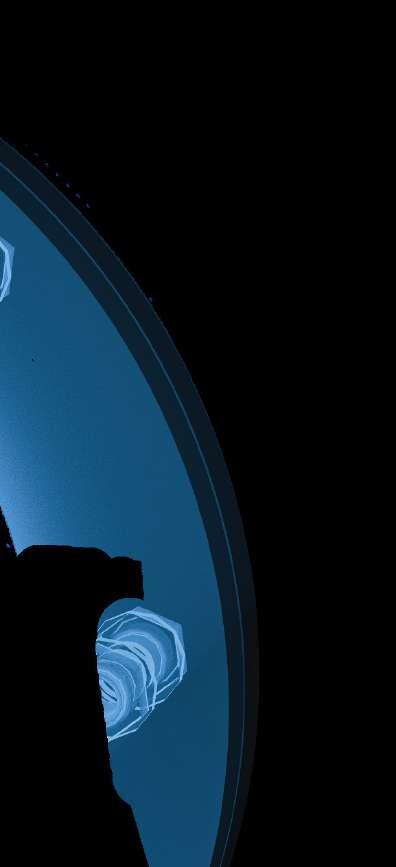
A high performance computer graphics system drives six 3D-stereo video projectors to create a seamless three-dimensional panorama of the data.
4
Picture clarity is made possible from an image that’s 20,000 x 1200 pixels and each user wears Active-Shutter Glasses, which present separate left/right views to achieve a stereo-visual effect.
• Big data exploration with multi-user interaction
• Virtual reality architectural site walk-through
• Scientific visualisation of complex data sets

• Examine, filter, segment, slice, and classify datasets in immersive 3D stereo
• Obtain a better understanding of the quality and quantity of data
THE PROJECT’S GOAL IS TO PROVIDE UTILITY MANAGERS WITH A PRACTICAL TOOL AND PROCEDURES TO HELP THEM IN DETERMINING THE OPTIMAL REPLACEMENT SCHEDULE FOR THESE CRITICAL MAINS.
“The Zinfra team working on South East Water’s sewerage program on the Mornington Peninsula has been excellent. Together we are on track to successfully deliver 135km of our 230km sewerage services project to 16,500 properties in 18 months. This is one of Australia’s largest projects of this type to be completed in such an accelerated timeframe.
Working with Zinfra has made delivery of this project easy. The members of the team have remained consistent for the project, making relationships effortless to manage, and they bring extensive experience with large scale, fast-moving pipeline projects to the table.”

Examining the optimal allocation of risk.
A case study of the Parramatta River.

A snapshot of institutional arrangements, security planning and objectives.
A review reflecting recommendations from the Queensland Flood Commission of Inquiry.
A collaboration between Sydney Water and Data61.

Water’s approach to putting
at the heart of what it does.
Here’s how Sydney Water supported WaterAid

solve a real problem in the developing world.
What are the benefits of SewCam technology?
from Germany and opportunities
Australia.
from the past and prioritising for
future.
Benefits
the nitrogen removal
Governments throughout the world have been using public-private partnerships (PPPs) over the past 20 years for three key reasons.
First, PPPs have been effective in helping governments respond to the increasing demand for infrastructurerelated services.
Second, by shifting the burden of capital spending to the private sector, PPPs can help governments do more with less.
Third, PPPs contribute to enhanced efficiency in delivering services. However, PPPs are not the answer to all infrastructure or public service shortcomings.
Successful PPPs require careful risk allocation and a strong enabling environment, which are a challenge to achieve. In addition, most PPP failures arise from poor contract preparation, inadequate risk allocation, the absence
of competitive and transparent tendering procedures, and poor contract monitoring and enforcement systems.
A wide range of approaches for enhanced private sector participation in water have been commonly used in different circumstances globally. Experience has been mixed: there has been considerable success, but also many examples where desired outcomes have not been achieved.
PPPs are about partnerships. In our experience, a government or authority that seeks to push all the risks to the private sector will note their project is not well received and is likely to fail.
Finally, a strong enabling environment is crucial. Clear legislation or enabling regulation is a prerequisite and will encourage investor confidence.
Successful PPPs require careful risk allocation and a strong enabling environment, which are a challenge to achieve.






The ideal PPP sees competition among private sector participants in both the debt and equity markets, resulting in delivery of high quality public services at the lowest possible cost. Long-term undertakings from the public sector (e.g. tariffs, concessions, management fees, etc.) underpin private sector returns, and a track record in honouring public
obligations will attract further private investment.










A well-developed framework, enabling legislation or regulation and fair risk allocation is necessary to attract private sector investment dollars into infrastructure as many countries increasingly look to compete for private sector capital to deliver their infrastructure needs.











Mike Woolston is the leader of Frontier Economics’ Water Practice. Stella Saris is the Director of Resources Energy and Infrastructure at SEAI A/NZ Banking Group. Paul Smith is the International Manager at AWA.









































































To read the full article, visit the Water e-Journal at bit.ly/water_ejournal
For areas of scientific study relating to public health to be effective, the ability to communicate results to the general public is crucial, both for directing public health initiatives and developing public education strategies.
This task is often difficult, especially when data sets include numerous parameters and units of measurement, such as for water quality.
The most common solution in such cases is to create an aggregate measurement in the form of a water quality index (WQI).
But the accuracy and interpretation of aggregate measurements can vary, limiting their usefulness as a tool for public education.
With this in mind, this study set out to compare two different WQI models, the National Sanitation Foundation WQI (NWQI), and two formulations of the Canadian Council of Ministers for the Environment WQI.
One used ANZECC guidelines, and the other used modified parameter limits (CWQI and modified CWQI), to determine their relative accuracy and potential as a tool for public education.
To do this, water quality data was collected at locations throughout the Upper Parramatta River, currently in the process of rehabilitation. The parameters for WQI considered were
dissolved oxygen, pH, electrical conductivity, total dissolved solids, turbidity, phosphates (as filterable reactive phosphates) and nitrates. This study also measured biological parameters, including macroinvertebrate richness (as SIGNAL scores), and levels of faecal coliforms, total coliforms, Escherichiacoli(E.coli) and enterococci.
Finally, to provide data to analyse accuracy against, the corridor imperviousness of tributaries and the river as a whole was calculated using GRASS GIS, as high levels of imperviousness are known to negatively impact water quality.
Once the indices were created, their behaviour was compared to three non-physiochemical factors known to be linked to water quality: macroinvertebrate richness, corridor imperviousness and bacteriological indicators, using range comparison and regression analysis.
Analysis of the WQIs found that the NWQI performed poorly, universally overestimating water quality, in line with what had been found with other studies.
The unadulterated CWQI performed better, matching the range suggested
by SIGNAL scores.
However, its performance in relation to catchment imperviousness was weak, and higher bacteriological levels counterintuitively correlated to better WQI results.
When the nutrient limit values for the CWQI model were modified to be more reflective of background levels, the resulting index was found to perform well compared to SIGNAL data, and showed an extremely high level of correlation with corridor imperviousness. It did, however, suffer from the same flaw as the unadulterated CWQI when compared to bacteriological parameters.
Based on these results, this study cannot recommend the use of any index analysed here for meaningful analysis.
However, it does recommend that a modified CWQI be considered for use in public education and preliminary assessment, as well as a starting point for the formulation of an Australian WQI.
William Chirgwin is an environmental scientist specialising in water quality management. He studied at Western Sydney University, completing both a Bachelor of Natural Science and a Bachelor of Science.
Professor Maheshwari has more than 30 years’ professional experience within the water industry and has authored over 200 publications including articles in peer reviewed international journals.
To read the full article, visit the Water e-Journal at bit.ly/water_ejournal
Analysis of the WQIs found that the NWQI performed poorly, universally overestimating water quality, in line with what had been found with other studies.
Australia’s blueprint for management of water is the National Water Initiative, a shared commitment by governments to increase the efficiency of Australia’s water use, leading to greater certainty for investment and productivity, for rural and urban communities and for the environment.

Planning for urban water security is guided by the National Urban Water Planning Principles that include a focus on a set of agreed levels of service (LOS), and a partnership approach for stakeholders to make informed contributions.
In all states and territories, responsibility for management of water resources is consistently delegated to state departments, operating within established frameworks. This is a critical first step in moving towards effective urban water security planning.
This paper provides a summary of the institutional arrangements for water service delivery and security planning in place in late 2017 for each state and territory in Australia, as well as a review of the LOS objectives adopted in each jurisdiction.
It also touches on arrangements for water resource management and regulatory oversight.
The paper found that the establishment of agreed LOS for water supply reliability has not consistently occurred.
The Water Services Association of Australia (WSAA) describes long-term LOS objectives in terms of frequency, severity and duration of restrictions.
There is clear evidence of LOS objectives being developed in Adelaide, South East Queensland (including Brisbane), Australian Capital Territory
(including Canberra), Darwin, Perth and Sydney, with varying degrees of sophistication.
All these jurisdictions have used the WSAA approach to LOS and quantitatively described expected restrictions frequency. However, in most cases there is scope to add more detail particularly in regards to the severity and duration of restrictions that might be expected.
The LOS approach taken in Melbourne is quite different, with a focus on water storage levels and only qualitative indications of the frequency or severity of restrictions that might be experienced.
Elsewhere in Victoria, the WSAA approach is adopted. In Tasmania, there is no evidence of any long-term urban water planning or strategy development; nor any discussion on the establishment of LOS for urban water supplies.
Although there is significant progress in developing LOS in Australia, it’s
questionable whether many can be called “agreed” LOS, as per the National Urban Water Planning Principles.
There is evidence of broader stakeholder and community engagement in the development of long-term water plans and strategies, and also for the general use of restrictions.
However, nowhere is there evidence that a community has been presented with LOS alternatives and the accompanying advantages and disadvantages of the options. Such an approach would seem a reasonable progression from the solid foundations now established.
Julie Allan is a chemical engineer with over 25 years of experience in the resources and water sectors.
To read the full article, visit the Water e-Journal at bit.ly/water_ejournal
The establishment of agreed LOS for water supply reliability has not consistently occurred.
The Queensland Flood Commission of Inquiry (2011) recommended that a full and proper technical review be conducted of the Wivenhoe Manual, for its flood operations to include a study of what the ‘best’ rainfall forecast meant, how the forecasts were to be used, and their reliability. The Wivenhoe and Somerset Dams Optimisation Study (WSDOS) was a technical review.
The control of floods through Wivenhoe Dam is representative of the generic challenges posed by gated, combined water supply and flood mitigation dams vulnerable to overtopping and dam break.

The 2009 Manual operating rules were measures adopted to reduce the risk of Wivenhoe being breached or overtopped by floods.
This paper evaluates this WSDOS and maps the differences between the operations framework advocated by WSDOS, versus the 2009 Manual (Revision 7). WSDOS favoured Seqwater’s 2013 Manual (Revision 11).
The focus of this evaluation is comparing rules in Revisions 7 and 11 pertaining to the flood control regime. The comparison includes the operating rules for entering the flood mitigation regime, and those pertaining to entering the Save-the-Dam regime. The evaluation, thus, is focused upon the threat of a rising flood.
The mapping identified that the principal issue is that the best available rainfall forecast should guide the decisions on dam releases.
The merits of the framework, described by Revision 7 versus the framework advocated by the WSDOS (Revision 11), on the forecast rainfall factor are discussed.
Practices overseas, like the Uncertainty Imperative (US National Weather Service), Forecast Based Operations and Adaptive Management (USACE) are cited for comparison, among others. A critical test for deciding this issue was the conduct
of a model run of what may have happened if Revision 7 had been complied with during the 2011 flood by using available rainfall forecasts in making dam release decisions.
This was not attempted by the WSDOS, which, like Queensland Floods Commission of Inquiry, passed on the forecast issues to later research.
A key to explaining the differences in approach between Revisions 7 versus 11 may be the differences in the disciplines from which each revision appears to have been derived. Revision 11 may be dominated by the deterministic hydrology paradigm, while Revision 7 may be led by the risk management discipline.
Current revisions of the Manual appear to have lost important aspects of the risk management approach to dealing with the uncertainties in rainfall.
The importance of positioning the storage for the probable errors in forecasting may not have been appreciated by the WSDOS.
The WSDOS may have considered that basing release decisions on actual rainfalls only was not making a forecast.
The paper recommends that further work is required in order to return to the Manual, the principles of risk management vital to dealing with uncertainty during large floods.
Greg McMahon has held positions in different water authorities in Queensland. He is currently Academic Chair for Rhodes Group Australia.
To read the full article, visit the Water e-Journal at bit.ly/water_ejournal
As the rags and solids in wastewater increase, you need innovation that keeps pumping stations problem-free. The submersible sewage pump type ABS XFP from Sulzer, with its versatile range of Contrablock Plus impellers, is insurance against downtime that’s easy to acquire.

The impellers’ superior rag handling and minimum free solids passage of 75 mm mean you spend far less time on troublesome pumping stations. Switching from an existing pump is easy, and you save energy immediately with the XFP’s premium-efficiency IE3 submersible motor – which Sulzer pioneered and provides as standard.
For more innovation
wastewater collection,
ASy dney Water and Data61 collaboration is researching advanced analytics approaches to solve water industry challenges.
This includes water pipe failure prediction, customer segmentation demand analysis, sewer corrosion prediction, optimising water quality, predicting sewer chokes, and prioritising active leakage detection areas, to achieve better outcomes for customers and deliver world-class network performance.
Both organisations have partnered to understand complex data sets that can be translated into knowledge.
These numbers add insight. They help to see further, understand data deeper and see it sooner.
Within this partnership we have developed skills on how to think about data, how to use it, and how to value it. Th is paper outlines how Sydney Water
has progressed on predictive analytics to develop capabilities using machine learning to develop tools of value for operations, shareholders and customers.
Th e collaborative effort on data analytics in these projects has used machine learning to predict a number of core requirements on piping processes for Sydney Water.
Th e focus of the research is to learn from current operation data and identify unknown or unconfirmed relationships.
The aim of doing this is to improve the prediction of the required needs.
In these projects, integrating current knowledge and expertise with data analytics has demonstrated promising values in predicting asset performance. The six collaborative projects are:
1. Improving predictions of the likelihood of failure for critical water pipes and small reticulation pipes
Data61 and Sydney Water have developed an advanced machinelearning technique-based conceptual model for Sydney Water, which improves probabilistic prediction of high-risk failures on critical water pipes.
2. Customer segmentation and demand analysis
Better prediction of water demand in the next few years will provide significant value to the price making decision and supply security planning at Sydney Water. In this project, we used data sets available from Sydney Water to discover the consumption patterns from the properties.
3. Predicting critical factors to prevent corrosion in concrete sewers
Predicting sewer corrosion is a critical task for water utilities worldwide in order to improve efficiency and save costs in chemical dosing, sewer pipe rehabilitation and sensor deployment. We are developing a new and reliable toolkit to enable spatiotemporal estimation of H2S within the sewer network.
4. Optimising water quality in delivery systems – a case study
We conducted data analysis to determine optimal network operation strategies, including chemical dosing strategies and operational reservoir protocols, which can in turn help reduce energy use and improve water quality throughout the network.
Predicting sewer chokes
We analysed related data to gain a better understanding of the causes of sewer chokes and further developed an analytical tool to predict the likelihood of future chokes.
6. Prioritising active leakage detection areas
We developed methodologies to improve the efficiency of the active leak detection (ALD) program by segmenting large pressure zones into smaller segments with different leakage behaviours and better prioritisation of zones/segments.
With 37 years of water industry experience, Dammika Vitanage is the Asset Infrastructure Research Coordinator for Sydney Water.
Corinna Doolan is currently the Science Research Coordinator at Sydney Water and has over 25 years’ experience in the various water industry projects.
Lucinda Maunsell is the Manager of Strategic Analytics at Sydney Water and has over 20 years’ experience in the water industry.
Bronwyn Cameron works in Service Planning developing asset strategies, having returned to Sydney Water on the Graduate Program in 2014.
Dr. Yang Wang is a principal researcher of Analytics research program in Data61, a part of CSIRO.
Dr. Zhidong Li is currently a senior engineer at Data61 in CSIRO, Australia –one of the largest data research centres across Australia.
To read the full article, visit the Water e-Journal at bit.ly/water_ejournal
The anaerobic ammonium oxidation (anammox) project was implemented at Dardanup Butchering Company (DBC) in Picton, WA. The original refurbished wastewater treatment system was implemented in 2011, and included construction of a high rate anaerobic reactor, and a biological nitrogen removal (BNR) system for nitrogen removal using the nitrificationdenitrification pathway.
The plant was designed to treat wastewater with a biological oxygen demand (BOD) of 9000 mg/L and total nitrogen (TN) of 350 to 450 mg/L at a flow rate of 0.5 ML per day.
The BNR system was in operation for over three years, but slaughtering process changes in the abattoir resulted in a low BOD, high nitrogen wastewater.
This lack of available carbon (low BOD: TN ratio) significantly affected the nitrogen removal. The bioavailable carbon (BOD) in the influent has, over the years, reduced to about 900-1200 mg/L. This restricted the viability of the conventional nitrification-denitrification system to treat the TN to the required effluent value of 45 mg/L without external carbon addition.
The plant was adding methanol for this purpose, costing $109,000 per annum.
Environmental Engineers International (EEI) was commissioned to examine the opportunity to implement a cost-effective alternative to the nitrificationdenitrification BNR system implanted in an aerated lagoon that followed the conventional activated sludge process.
The anammox process has recently been receiving interest from the Australian water industry due to its many benefits. When compared with the conventional nitrification-denitrification pathway for nitrogen removal, anammox consumes only 38% of the oxygen required by the conventional method and does not require any carbon source.
As aeration is one of the highest energy uses for a wastewater treatment plant, the application of anammox to the treatment process would significantly reduce the operating cost.
However, anammox bacteria have a very slow growth rate, with a doubling time ranging between nine days to two weeks.
The anammox bacteria are also sensitive to sudden changes in environmental or process conditions. The operational control required for the anammox is still unclear to the water industry. However, the industry
determines that potential advantages outweigh any disadvantages.
Studies on the application of the anammox process have resulted in varying success. However, a full-scale trial and application of the anammox process in a wastewater treatment plant has not been reported in Australia.

EEI carried out laboratory research in 2013-14, and implemented the system by modifying the operation of the existing plant at DBC. In early 2016, an upgrade of the sensors and control system were completed for the treatment plant to validate and optimise the anammox process. Based on the continuous online monitoring, it has been confirmed that the nitrogen removal from the wastewater reaches over 90%, with a fraction of the energy required in comparison to the previous operations.
In addition, excellent nitrogen removal was also observed during winter periods without any heating to maintain the anammox process below 20°C.
Dr Raj Kurup is an internationally reputed environmental engineer and project manager, who was selected by the Australian Water Association as the WA Water Professional of the Year 2017.
To read the full article, visit the Water e-Journal at bit.ly/water_ejournal
The anammox process has been receiving interest from the industry due to its many benefits.




Water launched its corporate strategy in 2014 with the vision to be “the lifestream of Sydney for generations to come”.

T he strategy focuses on transforming Sydney Water from an asset and compliance driven utility into a customercentric service based organisation.
This transformation will be enabled by a new customer-centric operating model, focused on building the business capabilities required for Sydney Water to achieve its vision.
The organisation has recently been restructured to support the new operating model and position each group to lead, enable or deliver customer outcomes.
As part of the restructure, the Customer Direction & Experience (CDE) team was established to accelerate the development of five critical customercentric business capabilities: • customer intelligence; • customer direction setting; • customer experience design;
• customer experience measurement; • business collaboration.
The CDE team’s initial focus was to develop a customer experience strategy. The purpose of the strategy was to enable Sydney Water to create great experiences for customers.
The foundation of the strategy is ‘customer promises’, which are based on customer insight and describe what customers need, want and value from Sydney Water.
These promises align to customer value across three themes:
• ‘every day’ that customers engage with Sydney Water products and services;
• ‘every time’ that customers interact with Sydney Water;
• ‘everyone’ in the community who benefits from Sydney Water being involved in long-term city planning and maintaining a future focus.
A roadmap has been developed to implement the customer experience strategy and uplift the business capabilities. It includes four streams of work:
1. Introducing human-centred design to transform the way we understand our customers, and then design and implement initiatives to improve customer experience.
2. Developing a measurement framework that combines real time ‘voice of the customer’ (VoC) feedback with quantitative data and longer-term customer sentiment to drive improvements in customer experience.
3. Establishing an effective way to educate and collaborate with customers to inform our pricing submissions. Improving the understanding of customers through sophisticated segmentation and research.
4. Optimising customer channels to reduce cost to serve for low value interactions and improve service experiences for high value interactions.Using all the above to drive a customer-centric culture and uplift customer-centric people capabilities.
A humancentred design approach was adopted to improve services for customers.
To date, the CDE team has worked across the business to progress several roadmap initiatives.
A human-centred design approach was adopted to improve services for customers who need Sydney Water approval to develop their property, and customers who are new homeowners.

This approach is also applied to solving customer pain points through the new customer innovation platform, “CX Lab”.
Through experimentation, we are refining our customer experience measurement framework, focusing on the processes, data and technology that will drive
customer experience improvements. Work is also progressing to segment customers based on an ‘outside-in’ view of their needs, wants and values and to engage with our customers to inform our price submission and operating licence review.
Rose-Marie Siros has over 15 years of experience in customer and community engagement, marketing
strategy development and implementation, customer experience, and change management.
Sally Armstrong has over 15 years’ experience in designing and delivering programs that improve outcomes for customers and communities.
Josh Isben is the Customer Experience Solutions Manager at Sydney Water and recently led the implementation of its customer experience innovation lab.
To read the full article, visit the Water e-Journal at bit.ly/water_ejournal
The foundation of the strategy is customer promises.

J oining WaterAid’s Water Innovators Challenge last year, a team of 11 Sydney Water employees, named Team LaBobo, was given an opportunity to work on solving a real problem in the developing world.
Team LaBobo’s challenge was to design innovative solutions to improve the appeal of an existing hand-washing unit, deliver a cost-effective solution and increase the uptake of this hand-washing unit among Cambodians.
Team LaBobo placed emphasis on understanding the Cambodian experience through observation, interaction and experience.
The goal was to develop sufficient background knowledge through these experiences and use these insights as a springboard to address the design challenge.
By exploring the contributions of team constructs and design thinking to innovation, the team realised the critical parts of social systems, connecting experiences and fostering creativity.
Team LaBobo also developed a customer journey map to understand the Cambodian people’s journey towards engaging with the hand-washing unit as a product.
Understanding of the customer’s needs inspired Team LaBobo to come up with initial hand-drawn designs that were further refined. The iterative approach permitted Team LaBobo to observe, emphasise and leverage stories to learn and form insights, providing a strong platform to frame the right problem and create the right solutions.
Adhering to the principle of Human Centred Design, Team LaBobo produced actual physical prototypes based on the criteria of desirability, feasibility and viability. Through stakeholders’ feedback, 3D-printed models validated and tested the physical properties of the designs in real life.
The transformation was achieved by creating a low cost, multipurpose hygiene station with integrated functions that extended beyond that of a hand-
washing unit – a ully functional hygiene unit that is intended to be a staple to family homes, schools and local healthcare centres.
Team LaBobo actively demonstrated Sydney Water core values in completing this innovation journey by having the customer at the heart of everything we do, by achieving as one team, by caring for one another and the community, by making every decision and every dollar count, and by creating new and better ways of doing things.
In October 2016, WaterAid, as the organiser of the Water Innovators Challenge announced Sydney Water Team LaBobo as joint winners of the Water Innovators Program 2016.
For Team LaBobo, this is a journey that started with little knowledge of how it would unfold but which turned into a positive way to potentially change the lives of others.
Raymond Llave is employed by Sydney Water as Digital Business Partner and is part of Digital Services team.
Elline Camilet is a Project Coordinator for Sydney Water’s Customer Direction and Experience team.
Steven Lin is the Business Reporting Manager in Customer Delivery Civil Delivery team in Sydney Water and has extensive knowledge of planning and process improvement in Civil Delivery operations.
To read the full article, visit the Water e-Journal at bit.ly/water_ejournal

S yd ney Water’s wastewater system is affected by saltwater ingress (SWI) where its sewer network is located within the intertidal zones of harbour and foreshore areas. It’s estimated that SWI accounts for extra flows of 1900 ML per annum and an additional 9.5 sewage pumping station hours per annum.
There is increased risk of raw sewage exfiltrating to waterways during low tides from leaky sewer assets located around foreshore catchments. Historically Sydney Water has relied on site inspections, flow gauging, conductivity logging and CCTV to detect sources of SWI.
Sydney Water has developed a video monitoring unit called SewCam, which can be deployed in maintenance holes as an additional tool in source detection investigations. SewCam was developed internally as there was a need to conduct video monitoring within wastewater assets but there was not a camera commercially available that could withstand the environment.
Hydrographers developed SewCam using four main components – GoPro camera, LED floodlight, batteries and a Pelican protector case. SewCam can be installed in 45 minutes and can record up to 24 hours of continuous footage.
SewCam is typically deployed in maintenance holes along a sewer main and can narrow down point sources of SWI in one monitoring event. Installed
at strategic points within a catchment, SewCam can identify an SWI source from anywhere within the maintenance hole.
SewCam has reduced the number of site inspections required to locate an SWI source and has provided video monitoring of assets during high tide that were previously unsafe to access. SewCam has replaced the need for short-term flow gauging and conductivity logging to detect SWI. SewCam provides better source information for future CCTV investigations. Typical SewCam deployment and retrieval can be carried out in one week and requires no confined space entries, making it a faster and safer method to detect SWI sources.
Comparisons of SewCam to traditional methods show that site inspections can only be carried out during high tide periods to see ingress.
SewCam can be deployed at any time when safer access is possible during low tide periods.
Flow gauging and conductivity logging can provide quantitative data for flow and conductivity analysis when deployed at strategic locations within a catchment.
Typical deployments are required for up to six weeks to capture multiple tidal events, require confined space entries and require multiple sites across the catchment and are subject to the same access issues as site inspections.
SewCam can replace the need for CCTV investigation when a point source of SWI is identified. SewCam can better
inform the location of ingress for more effective CCTV investigations.
SewCam replaced traditional monitoring techniques when investigating SWI sources at sewage pumping stations SP0011, SP0108, SP0208 and SP0117.
SewCam found point sources of SWI within maintenance holes at SP0011, SP0108 and SP0208. SewCam isolated SWI affected sections of sewer main for CCTV investigation at SP0108, SP0208 and SP0117.
It decreased the time it took to identify SWI sources from four weeks to two weeks, eliminated the need for any confined space entry. It also reduced the average monitoring cost by 82% and reduced the average monitoring hours by 66%.
Timothy Hill joined Sydney Water in 2006 and has worked in analytical and field services for 10 years. His focus has been around monitoring of environmental and wastewater in an assessment and reporting capacity.
Jeremy Hearfield undertook a water operations trainee position with Sydney Water from 2009-2011 and has since worked as a hydrographer.
To read the full article, visit the Water e-Journal at bit.ly/water_ejournal
The world’s populations are flocking to cities. In Australia, more than 90% of the population now live in cities and this is growing at a rate of 1.6% per year. This growth has significant implications for the urban landscape.
One of the greatest challenges for managing the changing urban landscape is dealing with water, particularly the excess stormwater run-off from increasingly impervious areas, transferred directly to streams through the expanding drainage network.
Conventional stormwater management can lead to increases in stormwater volume of up to 10 times, which leads to myriad impacts including: flooding of houses; roads and infrastructure; degradation of stream channels and ecosystems; decreased replenishment of aquifers and greater pollution of streams and bays.
In Australia, the mechanisms currently employed to combat these impacts are failing to engender change. How can better stormwater management be incentivised to reduce these impacts?
Currently, the stormwater charge in Melbourne is charged irrespective of how much stormwater is generated by the property (as a fixed fee for residential, and based on property value for non-residential).
The Victorian Government has, in its recent Water Plan, recognised that to complement existing provisions and regulations, stormwater management needs to be “improved by finding the best mix of legislative regulatory, financial and market-based incentives”.
One possible solution could be to provide a financial incentive and simultaneously increase public awareness of the impacts of imperviousness,
following the adage “if you can measure it, you can manage it”.
While true for drinking water, where smart meters are increasingly introduced to manage demand, could the same principles apply to stormwater run-off?
We examine a new approach to measure the impact of development on stormwater run-off through an imperviousness fee that would be calculated for each property, reflecting its impervious surfaces and the stormwater run-off it generates.
Imperviousness fees have been introduced across Germany since the mid-1990s, following court rulings that deemed the previous charging approach as unfair, and implementing a polluter-pays approach with an imperviousness fee.
Four case studies are presented from different regions and cities of varying sizes. Each application varies in the approach to implementation of the fee.
Yet, a common thread is that postimplementation in all case studies observed improvements to their stormwater management situation, including reduced imperviousness, better data for modelling, and reduced flooding.
For example, in the city of Munich, since 1995, over 4.5 million square metres of imperviousness has been removed, resulting in a 3000 ML/ year run-off reduction. In BadenWuerttemberg, within two years of the introduction of the fee, a qualitative survey found that 48% of townships perceived some decrease in imperviousness, with 11% reporting a high decrease.
The reduction in imperviousness has been achieved through increasing pervious pavings, implementation of rainwater tanks and green roofs.
So what could the introduction of imperviousness fees mean for our cities?
Economically, the benefits could include reduced investment in drainage infrastructure, reduced potable water charges due to supply from rainwater tanks, and associated energy-savings from the cooling of green roofs, reducing energy demand during the summer period by up to 40% (Spala 2008).
Stormwater control measures can reduce flooded areas by up to 40% for medium frequency events (Burns et al. 2015). Socially and environmentally, benefits include urban cooling, and amenity from increased watering of local parks (e.g. with harvested stormwater).
In flow-stressed waterways, reducing current run-off can improve the ecology and geomorphology of streams, with improved water quality providing for healthier ecosystems and communities.
Increased parks and healthy waterways have been found to increase nearby house prices by up to 5% all of which can offset the initial increased cost to residents (Mekala 2015). This makes a strong business case for implementing an imperviousness fee in Australia.
Dr Lisa Ehrenfried is an experienced integrated water planner.
Dr Geoff Vietz is the principal of consultants Streamology.
Kym Whiteoak is the head of the Economics and Policy Group at consulting firm RMCG.
To read the full article, visit the Water e-Journal at bit.ly/water_ejournal

Pop ulation growth, climate change and a growing urban population demand a shift in the function of cities and therefore, in urban planning and design. Globally, this shift is shaped by two UN agendas: the Sustainable Development Goals and the New Urban Agenda.
The New Urban Agenda progresses the objective of urban development from ensuring essential services (e.g. water, food and shelter) to a vision for future cities to be compact, inclusive, equitable, cohesive, participatory, resilient, sustainable and productive. Urban water management plays a vital role in achieving these outcomes, by providing infrastructure and ecosystem services.
In Australia, the role of water in urban development to help achieve the holistic vision of a future city is often described through the concept of Water Sensitive Cities – cities that are sustainable, resilient and liveable. Of these, liveability has been the most recent shift for the Australian water industry.
A case study of the Cup and Saucer wetland shows the liveability outcomes that have shifted Sydney Water’s appetite and capacity for similar water sensitive urban design projects.
The case study demonstrates how the wetland has contributed to: improving water quality through stormwater treatment; community engagement in the planning and maintenance of the wetland; enhancing habitat and biodiversity; and strengthening interagency rapport.
In addition, it highlights the economic value of the wetland, which has been calculated as increasing the value of the surrounding houses by $16 million.
Despite the demonstrated improvements of this and other industry case studies, there is limited post-completion evaluation of water sensitive urban design projects that informs a prioritised approach to embedding liveability within water infrastructure projects.
The paper therefore also demonstrates the value of benchmarking the wetland against the liveability indicator metrics developed by the Water Services Association of Australia and against the transition dynamics framework developed by the Cooperative Research Centre for Water Sensitive Cities.
In this way, it demonstrates how these indicators and frameworks are used
to plan and prioritise future similar projects to ensure a city is progressing towards being water sensitive.

It is proposed that the transformation to incorporating water sensitivity as standard practice can be facilitated by the following:
1. ensuring institutional commitment; 2. benchmarking a city’s state of urban water management and setting a common vision for the future state; 3. using the transition framework to identify gaps in the stages of transformation to set strategic goals; 4. using relevant indicators to better understand the full economic as well as non-monetary costs and benefits of the applied water solutions.
Dan Cunningham is a Lead Planner with Sydney Water who is championing some of the largest waterway restoration projects in Sydney as well as planning to improve waterway health.
Phillip Birtles works at Sydney Water developing water servicing strategies for the future.
Shona Fitzgerald is a treatment process engineer at Sydney Water who spent three months working with the United Nations University Institute for Water, Environment and Health.
To read the full article, visit the Water e-Journal at bit.ly/water_ejournal
The role of water in urban development [is] to help achieve the holistic vision of a future city.
As a water distribution and retail utility in South East Queensland, Unitywater operates and maintains about 6000km of water mains, servicing a population of over 700,000 people.
There are about 300,000 retail customers in the supply area and customers are metered and billed quarterly.
Unitywater’s water supply network encompasses two distinct regions, including the Northern Region, covering towns and cities on the Sunshine Coast, and the Southern Region covering Caboolture, Redcliffe and other suburbs.
These regions are comparable in terms of serviced population, network size, pipe materials and age, though network pressures are on average about 10m higher in the north.
However, real losses measured in each region are significantly different –typically being about 90 L/conn/day in the Northern Region compared with 55 L/conn/day in the Southern Region. Overall, real losses across Unitywater’s service area averages about 70 L/conn/day.
In accordance with its Corporate Strategic Plan, Unitywater has been pursuing initiatives to reduce leakage from an overall level of 70 L/conn/day down to a target of 50 L/conn/day over the next 10 years.
The main driver for the leakage reduction is the rising bulk water unit price, which is at $2.68 per kilolitre in 2016.
But to help direct appropriate activities and to achieve this target it is necessary to better understand both:
• the top-down water balance calculation, in order to provide a greater level of confidence that the results, particularly
at the regional level, reflect the level of real losses present in the network; and • the actual distribution of these real losses across the various infrastructure components of the water supply network.
To that end, over the last three years, a review of the assumptions used in the top-down water balance calculation has been conducted to improve the level of certainty associated with the overall leakage result.
In addition, a bottom-up or component analysis has been carried out to quantify the relative contribution to the overall leakage result by the various elements of the water supply network (i.e. trunk mains, reservoirs, reticulation mains, service connections, etc).
With the review of top-down water balance calculations, the real losses within Unitywater’s network reduce from about 70 L/conn/day to 52 L/conn/day. This reduced estimate is almost wholly attributable to the use of the actual 5% retail meter under-registration rather than the WSAA guideline figure of 2%.
The bottom up analysis shows that the background leakage in the Unitywater network is 24 L/conn/day.
This figure could be higher to account for some double-counting between reported and unreported leakage.
The bottom up analysis nevertheless proved very informative.
The bottom-up analysis suggests:
1. service connections are the major contributor to leakage within the network with 56% of the total losses occurring through these;
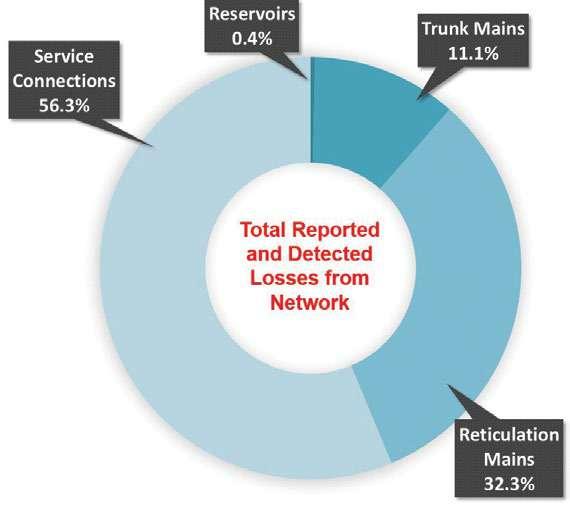
2. real losses are worse in the North than the South, confirming the results of previous top-down assessments; and
3. leakage from service connections in the North are much worse, two to three times, than in the South.
Ken Goraya has more than 15 years’ experience in water distribution utilities in the fields of infrastructure planning, asset management and system leakage management.
Michael Lukin is the Network Planning Manager for Unitywater. He has over 30 years’ experience in the planning, design and delivery of urban water and sewerage network infrastructure.
To read the full article, visit the Water e-Journal at bit.ly/water_ejournal







Australian Water Association provides members with a range of resources, tools and information to assist them in their day-to-day roles and long-term professional development.







Advertisers can use the quarterly print magazine, weekly enewsletter, Solus EDM and the website to reach a highly relevant, engaged and targeted audience.

Plan your professional development with the Association’s event calendar.
Ozwater returns to Brisbane for 2018, promising nothing less than to be the biggest and best yet.
Young Water Professionals gather in Victoria for the annual conference.
The 2017 QWater Conference covered the Water Industry of the Future.
Vietwater’17 showcased the export of Australian water innovation and expertise.
Winners of the SA Awards were announced at the annual event, which included a gala dinner.

The World Toilet Summit brought together industry and stakeholders to collaborate over sanitation issues.
The NSW water industry recognised the contribution of three leading professionals in the sector.
Award winners were given a chance to educate and inspire their fellow water professionals.
The Victorian Water Awards promoted the outstanding work of those in the water industry.
All about fun and debate, the event discussed a key water topic, while fundraising for WaterAid.


ASSOCIATION’S CALENDAR
SA: 2018 WATER OUTLOOK BREAKFAST BRIEFING
QLD: TECHNICAL SEMINAR BREAKFAST: Seqwater Water Security Update
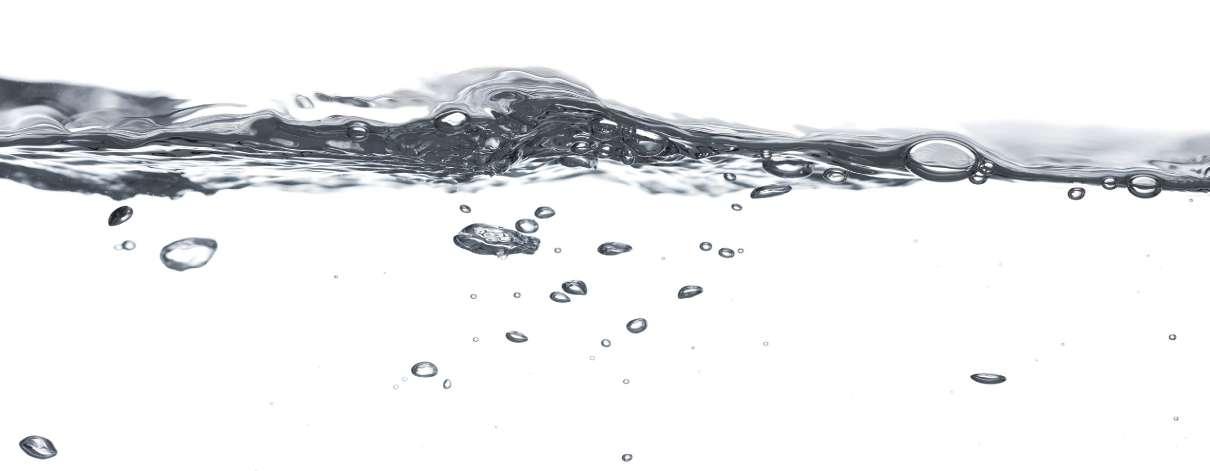
WA: WATER STEWARDSHIP WORKSHOP AND INAUGURAL SUNDOWNERS INFORMAL NETWORKING EVENT
NAT: AWA & IWA NATIONAL YOUNG WATER PROFESSIONALS CONFERENCE
OVERFLOWING WITH
WATER
NAT: WATER INDUSTRY SAFETY EXCELLENCE AWARD: Nominations Close
QLD: YWP PROFESSIONAL DEVELOPMENT AND NETWORKING EVENT
VIC: YWP MENTOR PROGRAM LAUNCH
NSW: HEADS OF WATER FORUM NSW: HEADS OF WATER GALA DINNER & AWARDS NIGHT
NAT: AUSTRALIAN STOCKHOLM JUNIOR WATER PRIZE: Nominations close
QLD: TECHNICAL SEMINAR
WA: TECHNICAL TOUR
TECHNICAL LUNCHDIVERSITY IS GOOD FOR BUSINESS
WA: SUNDOWNERS INFORMAL NETWORKING EVENT
WA: STATE CONFERENCE: WAter –
STATE OF EXTREMES
QLD: WOMEN OF WATER NETWORKING EVENING
QLD: TECHNICAL SEMINAR
WA: SUNDOWNERS INFORMAL NETWORKING EVENT
QLD: YWP MENTOR PROGRAM LAUNCH
OZWATER’18
February 15 2018 Water Outlook Breakfast Briefing
Ahead of the 2018 election, this not-to-be-missed breakfast is an invaluable occasion to join the conversation about critical issues and opportunities facing the state’s water industry with both sides of politics.
March 9 Heads of Water Gala Dinner & Awards Night
Join your peers to celebrate the NSW Water Industry’s feats as the winners of the 2018 NSW Water Awards are announced.
April 6 State Conference. WAter – A State of Extremes
The conference will explore how the water sector responds to the local context – be it in flood or drought, urban or rural, reuse or discharge. Use the opportunity to express great ideas, learn from lessons, pick up new approaches and be inspired by case studies.
In line with progressing the water industry, Ozwater’18 aims to once again bring together the who’s who in water to discuss the important topics facing the water industry and provide a platform to exchange strategies and ideas in a public forum.
Held at the Brisbane Convention and Exhibition Centre, Ozwater’18 promises more than 4000 attendees, 200 presentations, 240 exhibitors, representatives from at least 30 countries and social events, content, contacts and new ideas over three days.

This year’s program committee, under the Chair of Louise Dudley, has made a commitment that Ozwater’18 will explore the evolution of the industry and what needs to be done to be revolutionary, making the theme of this year Evolution Revolution.
This will be addressed through the keynote speaker presentations with big picture ideas and themes of automation, humanity and leadership, in addition to conference streams.
“Ultimately, the purpose is to get people thinking, asking questions and sharing knowledge and ideas. This year’s program boasts a diverse range of topics that are as informative as they are thought-provoking,” Dudley said.
“Knowledge sharing is critical as it builds the collective know-how, thereby strengthening
the industry as a whole. By exploring a range of pertinent topics at one major event, industry players can keep abreast of the most up-to-date trends and information, learn about solutions to current and emerging challenges, and discover potential partnership opportunities with other businesses.”
The water industry is currently facing the challenges of climate change, population growth, rapid technological advancement and changing customer expectations, to name but a few.
To ensure the industry remains strong and continues to flourish, she suggested the industry embrace innovation, involve customers in decision-making, work in harmony with the natural environment, and partner with like-minded organisations for success –all of which are topics explored throughout the conference.
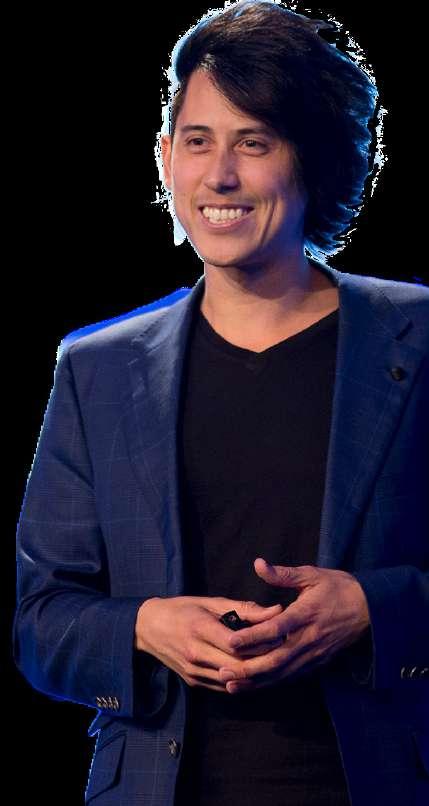
“We’re all striving to be efficient, customer-focused and innovative businesses, so, for the greater good, it makes sense to share our successes, failures and learning with our fellow industry participants.
“In my opinion, there has never been a more exciting time to be part of the water industry,” Dudley said.
WHERE: Brisbane Convention & Exhibition Centre (BCEC)
WHEN: 8-10 May 2018

WHO: Water professionals across various sectors. The Ozwater’18 Trade Exhibition will be the largest display of the latest water industry science, innovation, technology, products and services for all water professionals and associated industries.
PRICES: Early bird registrations close March 31. The trade exhibition is free to attend.
AWA member: $1295
New AWA Professional Membership + Ozwater registration: $1545 Non-member: $1690
Full-time student - AWA Member: $630 Full-time student - NonMember: $820 Retired Members: $645
DAY REGISTRATIONS
about existing
She also added that as CEO of Queensland Urban Utilities, there’s a strong focus on innovation, research and development, resulting in her keenness to hear a number of technical presentations on how others have adopted innovative practices to optimise their performance and realise efficiencies.
“Customer-centricity is also of great emphasis, as shown in the case study and poster pitch presentations under Stream Five: Working with Customers, particularly in the commercial customer space.”
Australian Water Association National Events Manager Kirsty Blades said invite-only sessions by ‘accent speakers’ will look at how corporations can evolve business models, what can be learnt from the evolution of the energy sector, adaptive and agile organisation techniques, skill sets of the future and the ongoing importance of STEM, amongst others.
“These streams are built around the abstracts submitted during the call for papers process. For Ozwater’18 we had 446 submissions received, with only 150 presentation spots available, so the program is the best of the best.”
“The streams and workshops are grouped according to themes that reflect the diversity of the sector. These include: operations and asset management; community health; policy and regulation; customers and communities; global perspectives; change management and supporting rural, remote & regional areas,” she said. Blades also said the dedicated theme of safety and wellbeing is a first at Ozwater’18.
“The industry safety and wellbeing program will run across Wednesday and Thursday. Kicking off Wednesday afternoon, delegates will participate in a workshop facilitated by Melbourne Water on ‘Moving Towards a Generative Safety Culture on a Major Capital Works Program’, with the opportunity to attend the Ozwater’18 Gala Dinner on Wednesday night, where the Water Industry Safety Excellence Award winner is announced.
“For Thursday, a customised program has been built with a number of invited speakers looking at mental health and wellbeing, and new and innovative ways the industry can promote safety.”
AWA member: $640 Non-member: $830
AWA and YWP network member: $600 (Tue program only) Non-member: $840 (Tue program only)
All Ozwater full & Tuesday day delegates aged 35 and under have the option to attend the YWP Tuesday program complimentary. To learn more and register, visit: http://bit.ly/Ozwater18

1Registered delegates can register for the Ozwater’18 gala dinner and Australian water awards night. The event will commence at 6.30pm on 9 May.
2In the exhibition hall, attendees will see a new ‘Drone Zone’ – a large netted space allowing drone operators and suppliers the opportunity to do actual demonstrations and presentations.
3For young water professionals, the official YWP program is now fully integrated into the main Ozwater program and will take place on 8 May.

Today’s young professionals are tomorrow’s leaders. In grooming future water leaders to be experts in their field, the International Water Association Australia (IWAA), together with the Australian Water Association, has identified three disciplines to set them apart: the ability to connect, collaborate and accelerate.

The triplet forms the theme of 2018’s Young Water Professionals (YWP) Conference, with the event focusing on collaboration between industry, research and government, as well as the value of connections.
Taking a step further from the conference theme in 2016 of ‘connect and collaborate’, this year’s acceleration addition aims to cover ideas that can be accelerated into action for a sustainable water future.
A presentation that highlights this is the keynote by University of Melbourne Enterprise Professor Rob Vertessy.
Formerly the head of the Bureau of Meteorology, Vertessy will speak about global water security and the state of the Australian water sector.
The session focuses on strategic analyses of the risks to water security, conducted by various multilateral agencies, due to a serious and worsening supply/demand imbalance caused by rapid population growth and industrialisation, over-extraction of water, chronic pollution and climate change.
It will also delve into renewing Australia’s commitment to growing talent and the institutions that nurture it.
“Australia has surmounted many of its water challenges because we invested in good people and institutions first, enabling us to develop good policies, sound management arrangements and appropriate infrastructure,” Vertessy said.
“But the job of water reform is never complete and we, in Australia, are at risk of diminishing our performance if we don’t return our attention to research and capacity development and the nurturing of our water institutions.”
Vertessy claimed young water professionals need to understand their importance to Australia’s future.
“Their capability will determine our performance as a nation when it comes
to managing water resources. They can also help tackle the global problem by supporting Australia’s efforts in water diplomacy. But they need to understand that they face not only opportunities but responsibilities.”
Meanwhile, RM Consulting Group Senior Consultant Jessica Saigar will be talking about making the case for large Integrated Water Management (IWM) investments in urban environments, specifically around its recent project on the Fishermans Bend redevelopment.
Saigar said IWM investments are becoming commonplace as greater value on green space, alternative water and sustainability is placed.
“The key to success for IWM investments is preparing a business case for approval by management, the board of directors and the government. IWM projects may be more expensive but a variety of benefits exist that can be quantified and monetised.
Held at the Melbourne Cricket Ground, the fifth YWP conference expects about 180 young water professionals from both national and international scenes.
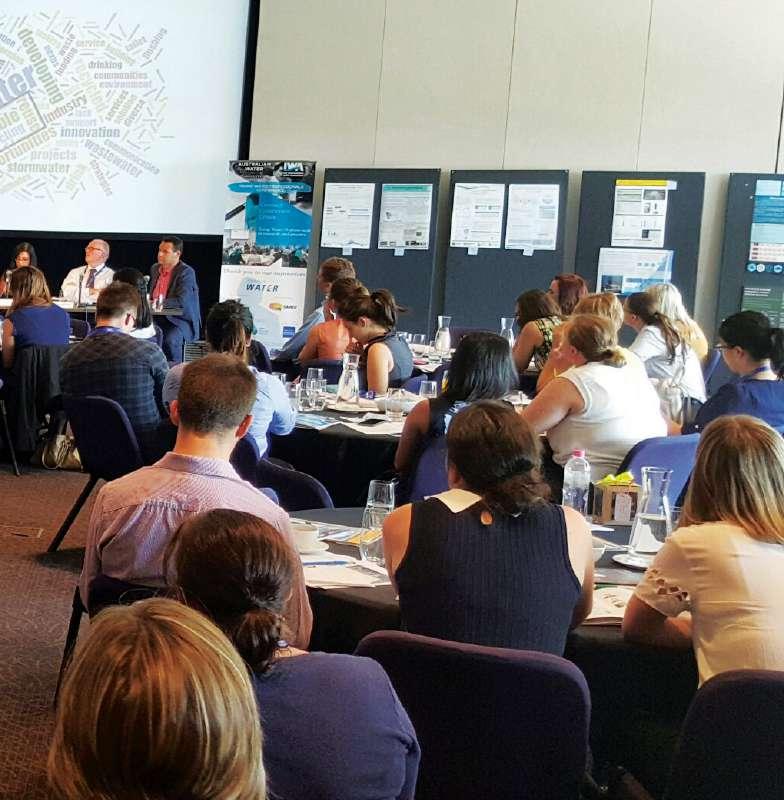
“The emerging water leaders will have both the opportunity to learn from global professionals and the responsibility to contribute water solutions to global water challenges,” IWAA Branch Chair Darryl Day said.
Day mentioned that the YWP Conference is targeted at linking those involved in water research with policy, technology and practice.
“The conference opens the window into opportunities available from being involved with both IWA and AWA and proving valuable insights to accelerate careers and have fun along the journey.”
According to AWA YWP Specialist Network Committee President Michael Webber, the conference is unique in attracting emerging leaders from around Australia in one place.
“Together, we’ll be able to develop potential solutions to the challenges our industry faces with no constraints placed on our creative thinking. So continue to connect and collaborate.”
YWP Committee Member Ben Thwaites said the themes of Connect, Collaborate and Accelerate have been front of mind in the development of the program, with the workshops and panel discussions organised to focus on water supply, sanitation and hygiene issues and sustainable development goals.
“Not having a water background makes these areas almost unknown to me and therefore, building understanding will be of interest. The workshop on leadership will also be a great opportunity for self-reflection and realigning personal development goals,” he said.
WHERE: The Melbourne Cricket Ground
WHEN: 22-24 February 2018
WHO: Young Water Professionals (up to the age of 35, inclusive of students) working or studying within the Australian or international water sector
HOW MUCH:
Thurs/Fri only registration
AWA/IWA member: $250
Non-members: $350
Sat site tour only registration: $80
How connecting with professionals and communities results in the building of enduring, effective relationships and unity in a local, national and international context.
How cooperation amongst different groups can achieve mutually beneficial outcomes. It includes:
l Strengthening partnerships between research, industry, universities and government l Interdisciplinary alliances, including specialists outside of the water sector l Engaging with customers and communities on a local, national and/or international level l Delivering projects with multiple stakeholders and meeting their expectations
How to accelerate an idea into action. It includes:
l Capturing and holding the interest of a diverse range of stakeholders to address ‘wicked’ water problems
l Innovating at all stages of project delivery, from options analysis to functional and detailed design, from community engagement through to construction
l Leveraging other industries and government sectors to achieve better outcomes for the community
The 2017 QWater Conference focused on the Water Industry of the Future, showcasing a broad range of presentations on issues likely to influence the management of water utilities in the future. These presentations covered a range of perspectives, from engineering and science to legal and human resources, across customers and water utilities alike.

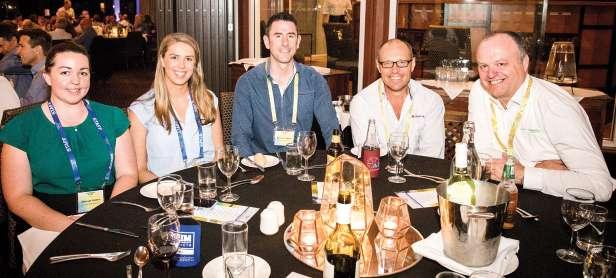
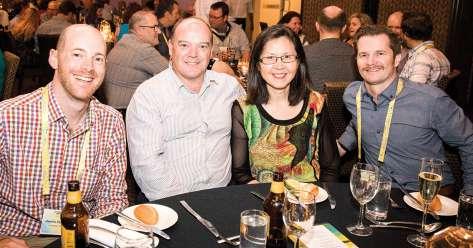
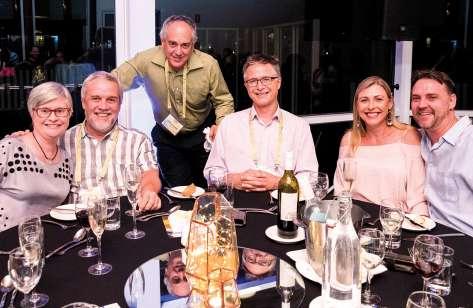




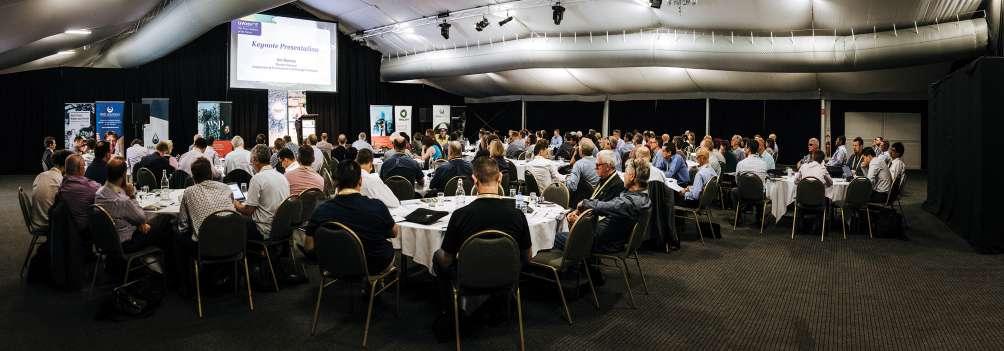
The Australian delegation to Vietwater’17 was built from the Federal Government and the Australian Water Association’s program of work in Vietnam to showcase and support the export of Australian water innovation and expertise. Delegates were involved in a series of tailored events that expanded the scope of business opportunities across the Vietnamese water sector.



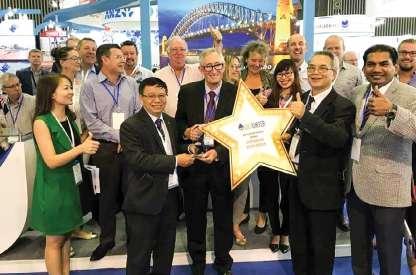


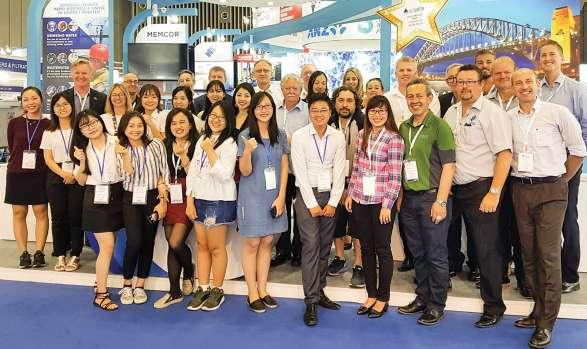

The industry recently celebrated the South Australian water sector’s achievements at the Adelaide Convention Centre. The event was a great success, with attendees and winners alike mingling over dinner and pre-dinner drinks.






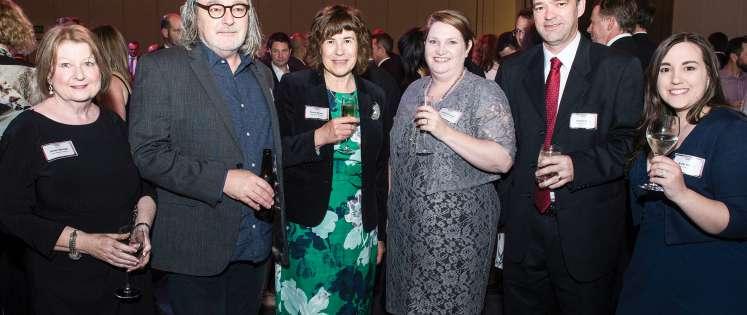

The World Toilet Summit was a global event that brought together various sanitation stakeholders to collaborate on innovative inventions, projects and products in the sanitation sector under one roof.

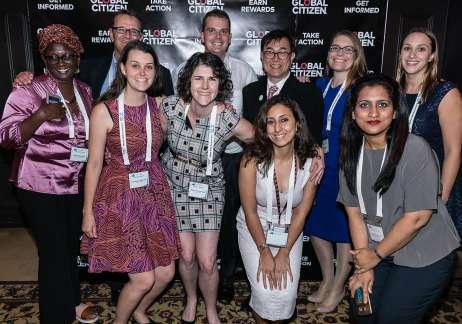
The NSW Legends of Water Dinner provided an opportunity for the water industry to recognise the contribution of three leading professionals in the sector.
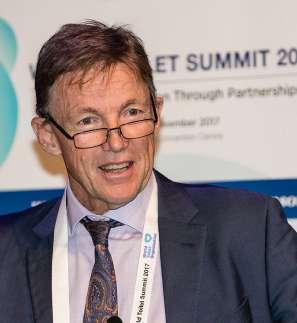






The Victorian Water Awards promoted the outstanding work of individuals and organisations in the water industry and recognised excellence in the technology, business and delivery of water projects.


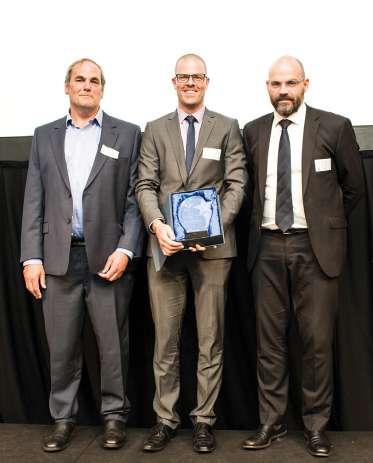
The inaugural Western Australia Water Awards Showcase was held at the Department of Water and Environmental Regulation, and gave award winners the chance to educate and inspire their fellow water professionals.

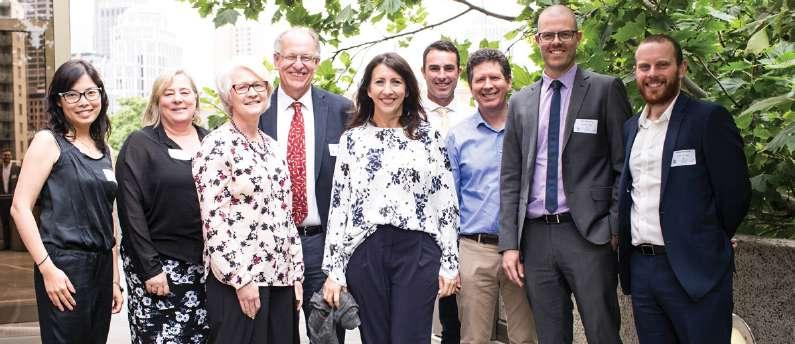


T he Tasmanian Galah Dinner and Debate, including YWP award presentation and networking drinks, was all about fun and debate. Attendees discussed if ‘Being Smart about Water is a Dumb Move’, while fundraising for WaterAid.



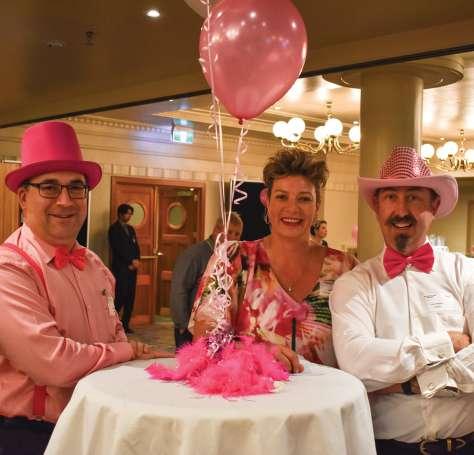



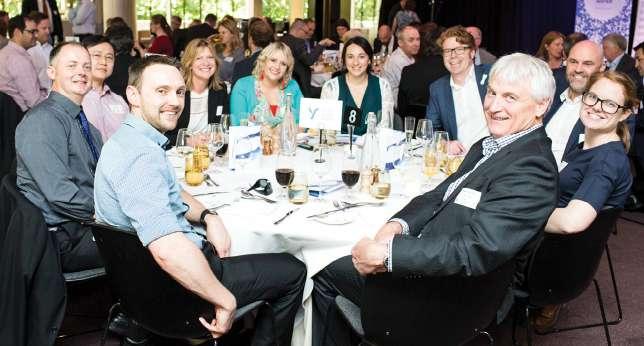

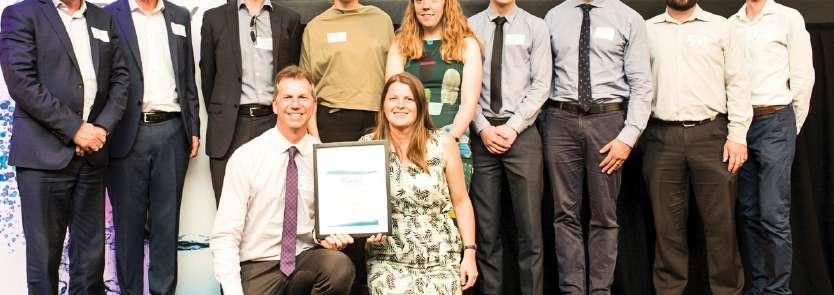
WITH MORE THAN 50 YEARS OF involvement within the water industry, I learnt many lessons through my experience locally and internationally.
I did my early training in a very practical way, with Southern Cross/ Toowoomba Foundry. I then moved on to WG Utting before joining the Department of Foreign Affairs as a SEATO Aid Water Treatment Adviser, spending six months in Vietnam to install a water treatment plant in Bien Hoa.
This was a unique situation because the Australian Government, in the ‘60s, made a gift of all equipment for this plant to service some 80,000 people in this region.
I then returned to Australia and jogged along for the next 22 years or so in the water pollution control and manufacturing industry.
high in its treated state. The water was drawn from the Dong Nai River and the treatment plant was right on its banks.
Previous to our installation, there was a water treatment plant of some sort but it was very elementary and drawing water from wells in Bien Hoa was a health hazard, especially during wet seasons as waste accumulates.
During my time in Vietnam, I was also staying with a medical group and they had constant minor stomach problems, which doctors were treating at the end point.
This is where water treatment engineers have a superior approach because from their point of view, it would be going back to the source –the unhealthy water from wells.
So we installed a holding tank where the water from underground went. We got a floating chlorinator that worked on chlorine tablets, chlorinating the water coming into the building. Following that, the stomach irritations were corrected.
I also worked on a couple of local projects that benefitted the community – specifically, one involving pollution control systems.
Seeing the world and water issues evolve over the past 50 years or so, there needs to be realisation that water is one of our most valuable consumption assets.


With the population explosion in the world, we are on the verge of water wars.
There is only a finite amount of fresh water available for this increasing population, and we’re getting near to utilising it all.
This is evident in the Himalayas, where snowcap on mountains is decreasing, with a slower discharge of water into rivers. Imagine what will happen if those rivers continue to run slow.
But the industry has started taking the relevant measures to combat that.
When I was working within government, we used to work on the basis of about 250L per head, per day. I understand that now, we are working on half that figure. This is the type of approach that will be necessary for the conservation of water and the use of our water supplies. This is our challenge for the future.
The lessons learnt in Vietnam, as applied to Australia, were water quality and treatment.



The water treatment plant in Vietnam did not attempt to supply all homes; it only supplied to major public buildings, such as hospitals.
Otherwise, it followed the Degrémont water treatment system of supplying to standpipes.
But the quality of water was quite
I did some initial work on reverse precipitation or flotation methods. The process used dissolved air to float fats upwards to the surface for collection.
The methodology that my engineers and I were able to develop into the abattoir industry, for instance, made a difference to the quality of water discharged as waste into local streams.
The work that I did was fairly elementary, but other people then developed it to a higher stage.
Allan Pettigrew has been involved within the local and international water industry for more than 50 years. Having retired in 1998, he is now an Honorary Advisor in research and development to water treatment and environmental interests.

HAVING SPENT TIME IN VIETNAM IN THE 1960 s TO WORK ON A WATER TREATMENT PLANT, ALLAN PETTIGREW LEARNED LESSONS THAT ARE STILL RELEVANT TO THE GLOBAL INDUSTRY TODAY.
There needs to be realisation that water is one of our most valuable consumption assets.ALLAN PETTIGREW

 DR KIRSTIN FERGUSON
DR KIRSTIN FERGUSON

Dr Ferguson is one of Australia’s leading company directors, as well as an awardwinning expert on leadership and corporate culture, diversity and inclusion. She has had an incredibly diverse career. After joining the military aged 17, she graduated as Dux of her Air Force graduating class at the Australian Defence Force Academy. After studying law and becoming admitted as a solicitor, she went on to become a highly successful CEO of a global consulting business before completing a PhD in leadership and culture, for which she has received numerous awards.
She is a now a professional company director and her current board appointments include the Australian Broadcasting Corporation, SCA Property Group Ltd, Hyne, and Layne Beachley’s Foundation. She also sits on the Advisory Panel of SheStarts, an incubator for female-led technology startups, and is the Chairman of the Women’s Agenda Leadership Awards. Previous board appointments include CIMIC Ltd, Dart Energy Ltd, SunWater Ltd, Thiess, Queensland Rugby Union, and the Queensland Theatre Company.
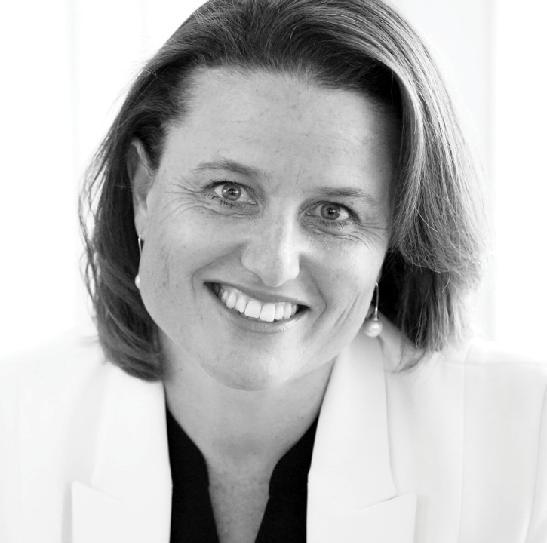
She has been named as one of the Australian Financial Review’s 100 Women of Influence, has been awarded a Sir Winston Churchill Fellowship, and was recently named by Women’s Agenda as one of 30 women redefining business in Australia.


Theoretical Physicist, Head of Innovation at SAP Africa and Aspiring Extraterrestrial (Ex South Africa)

Since childhood, Dr Adriana Marais has dreamed of living on another planet, and is currently one of the 100 Mars One Project astronaut candidates in the running to move to the red planet in the next decade. “The reason I want to go to Mars is simple: the allure of the unknown is far more powerful than the comfort of the known.” As Head of Innovation at SAP Africa she is passionate about exploring innovative applications of emerging technologies to challenges facing the continent.

Adriana has authored numerous academic and popular science articles on her research, and has received a range of research awards. She is grateful for the platform she has as a scientist, innovator and Mars One candidate to inspire school children, teenagers and adults around South Africa and globally to get excited about the future, believe in their dreams and remember Nelson Mandela’s words “It always seems impossible until it’s done”.
Adriana will talk about her research in quantum biology and the origins of life, the technology required to sustain terrestrial life on Mars, and the various projects aiming to send crewed missions there including those linked directly to water. Delegates will see how the establishment of, and potential discovery of evidence of, life on Mars, would be one of the most profound possible contributions of science to humanity.
